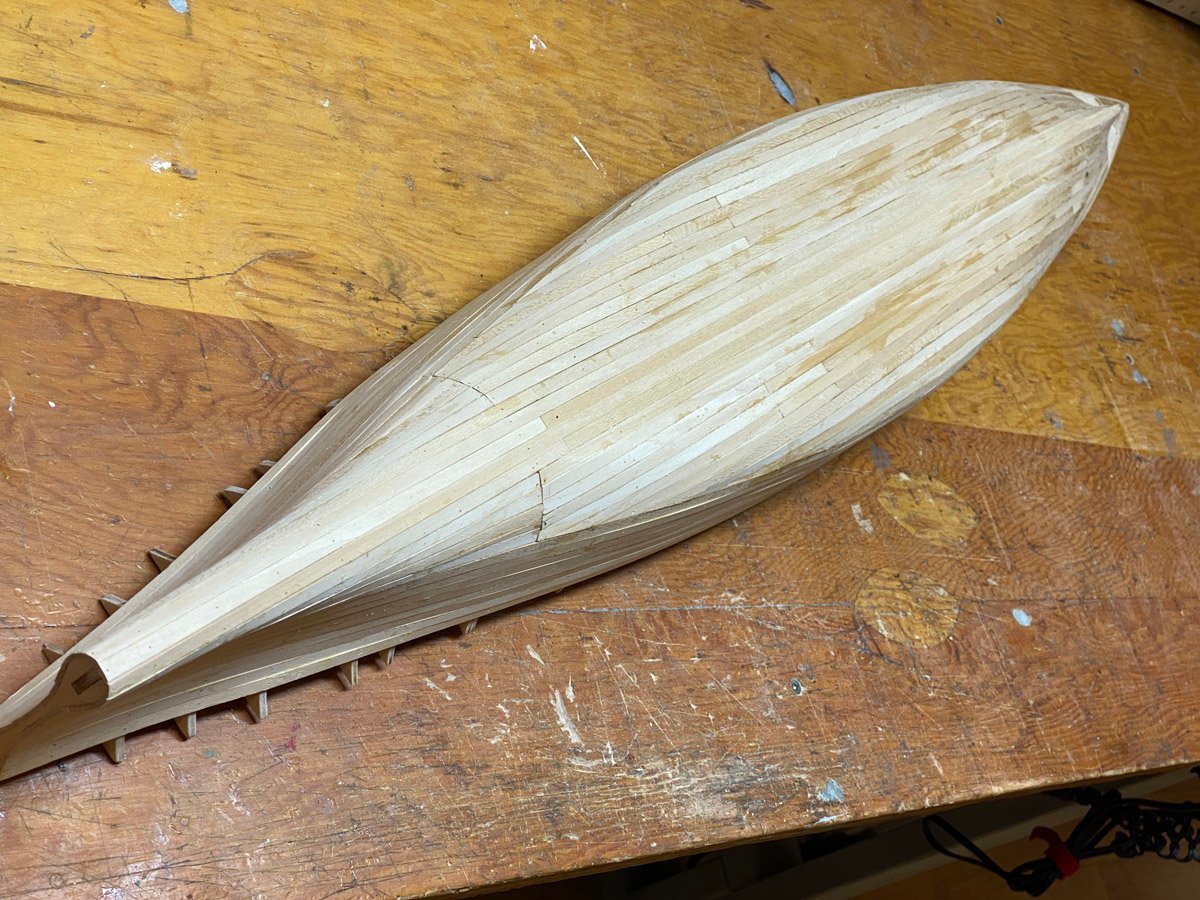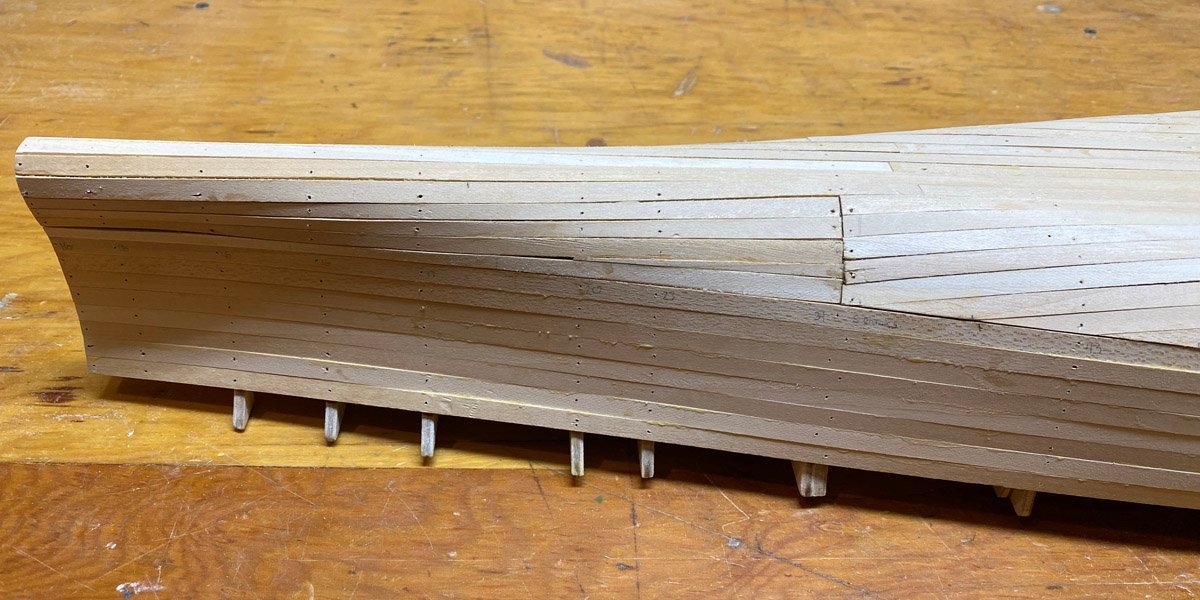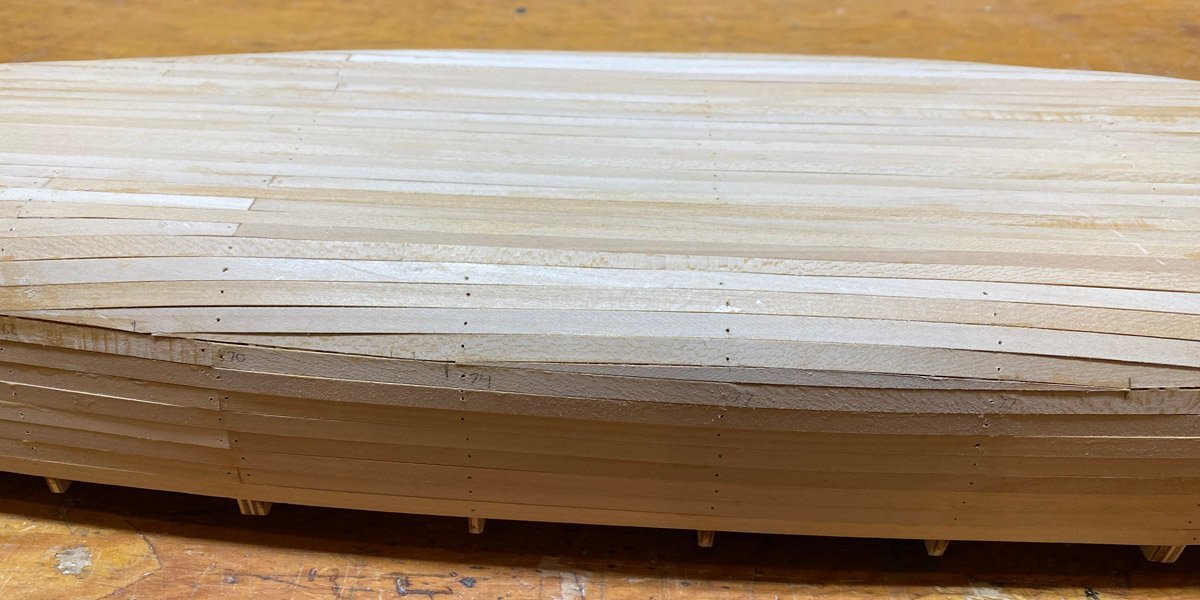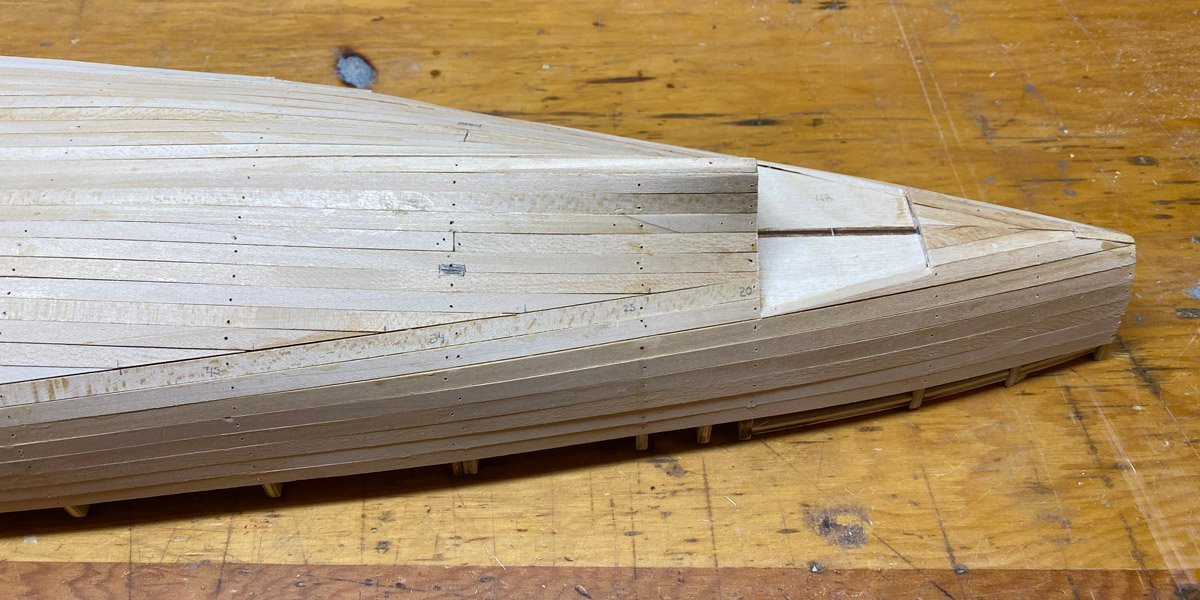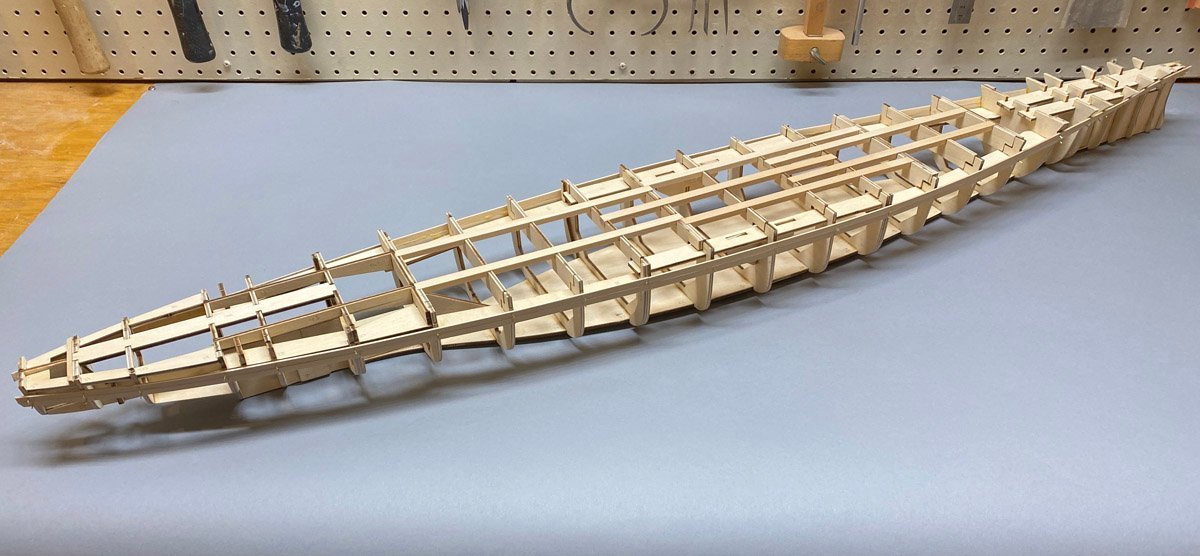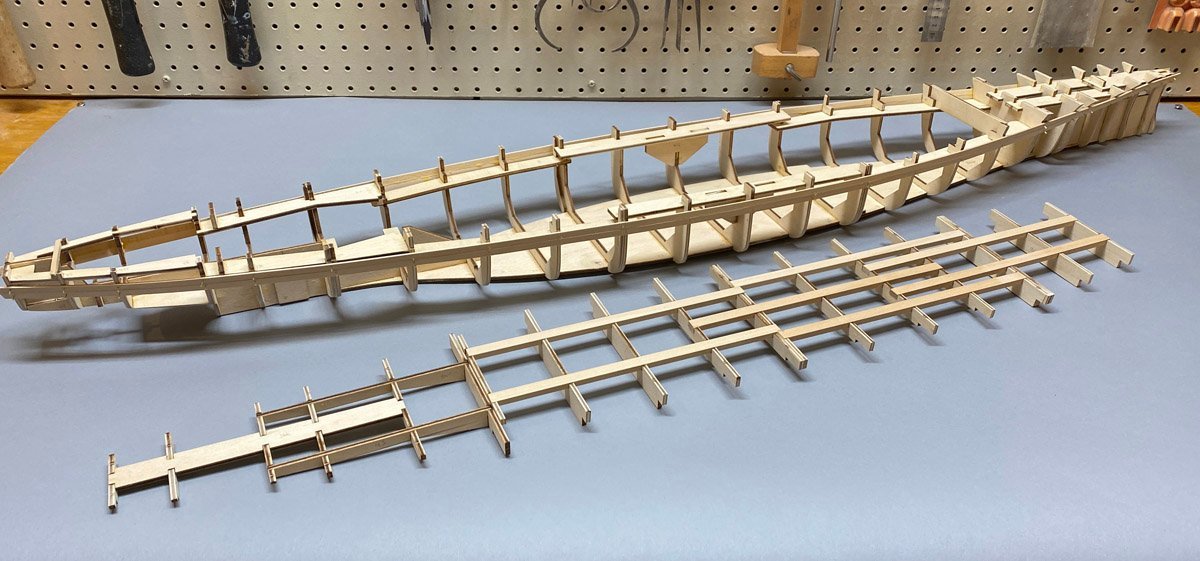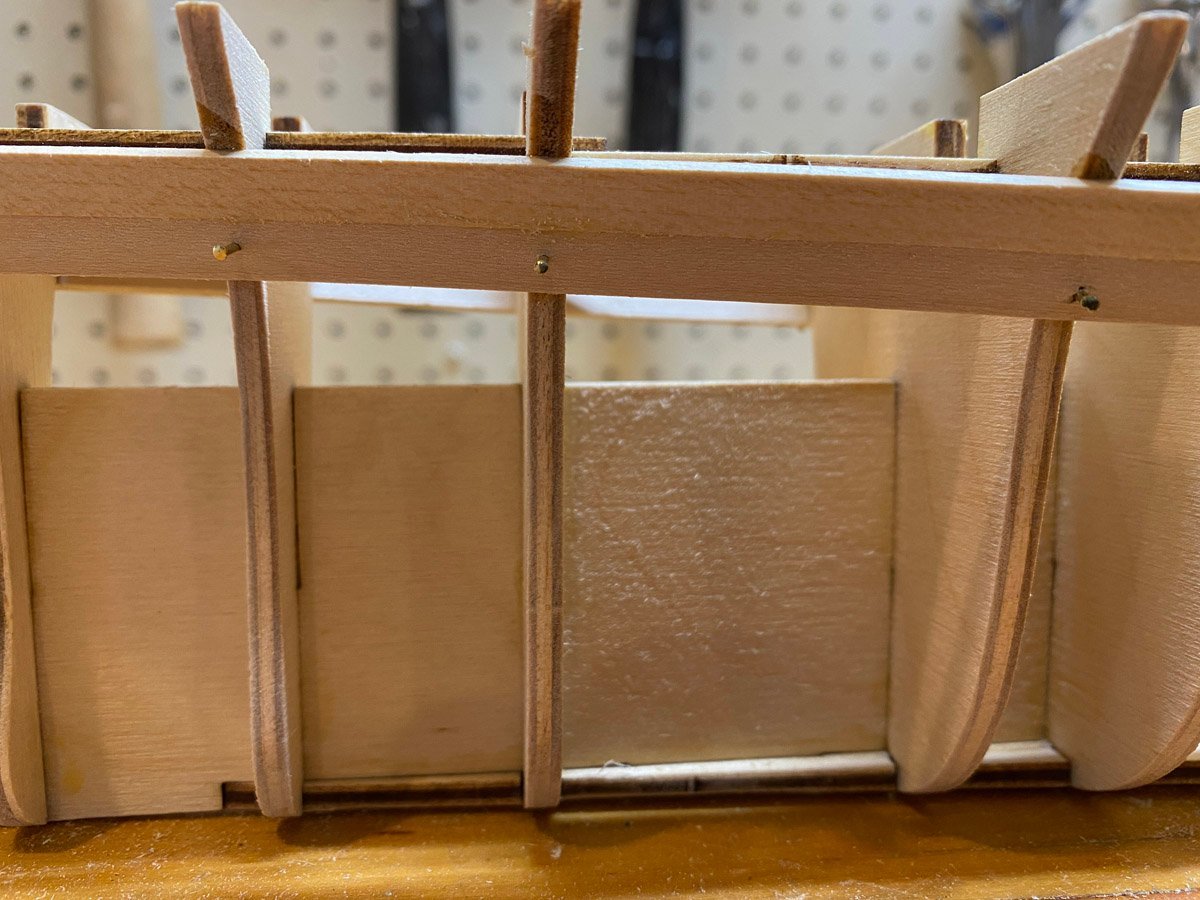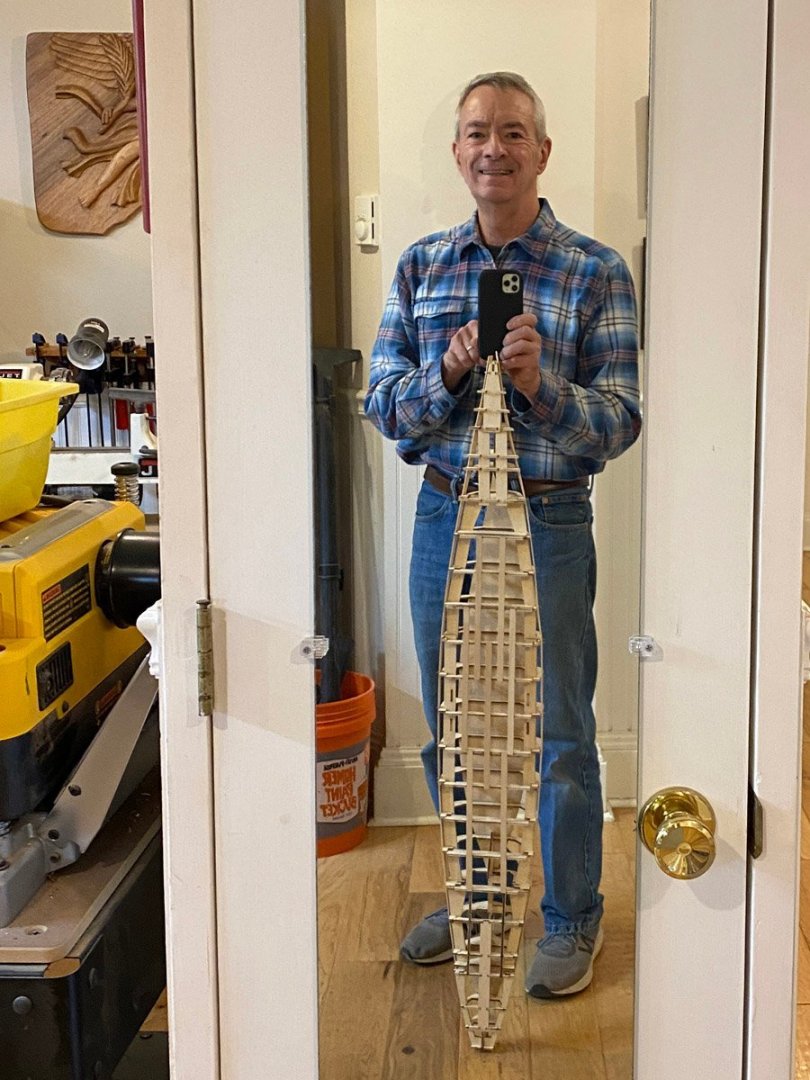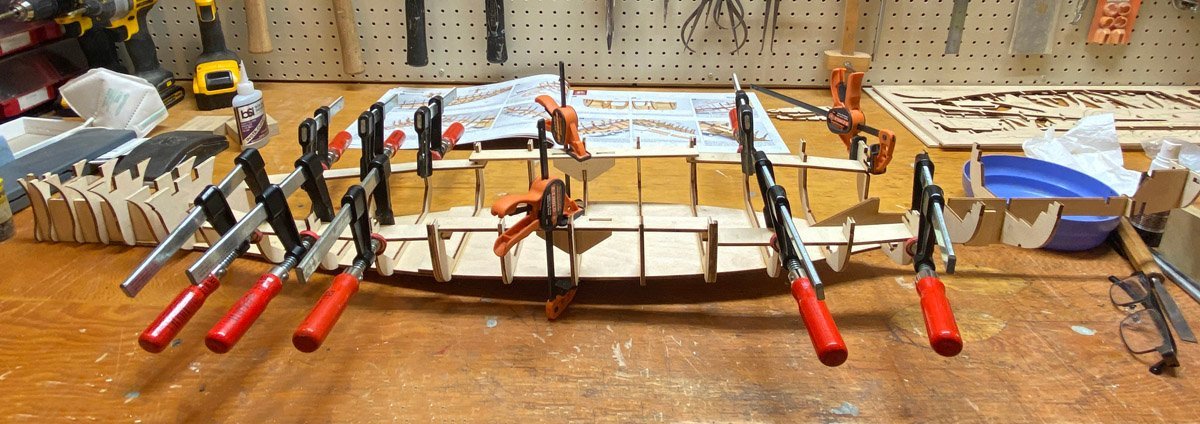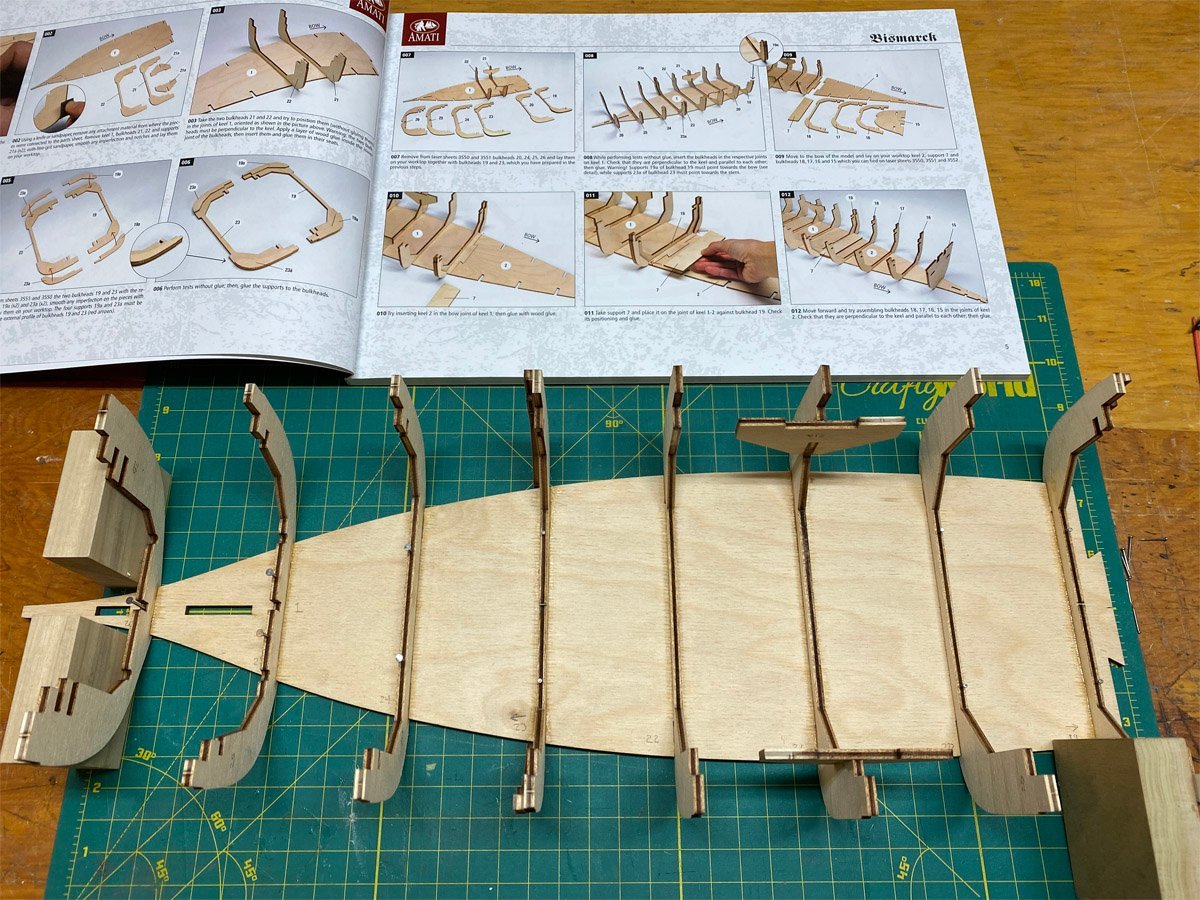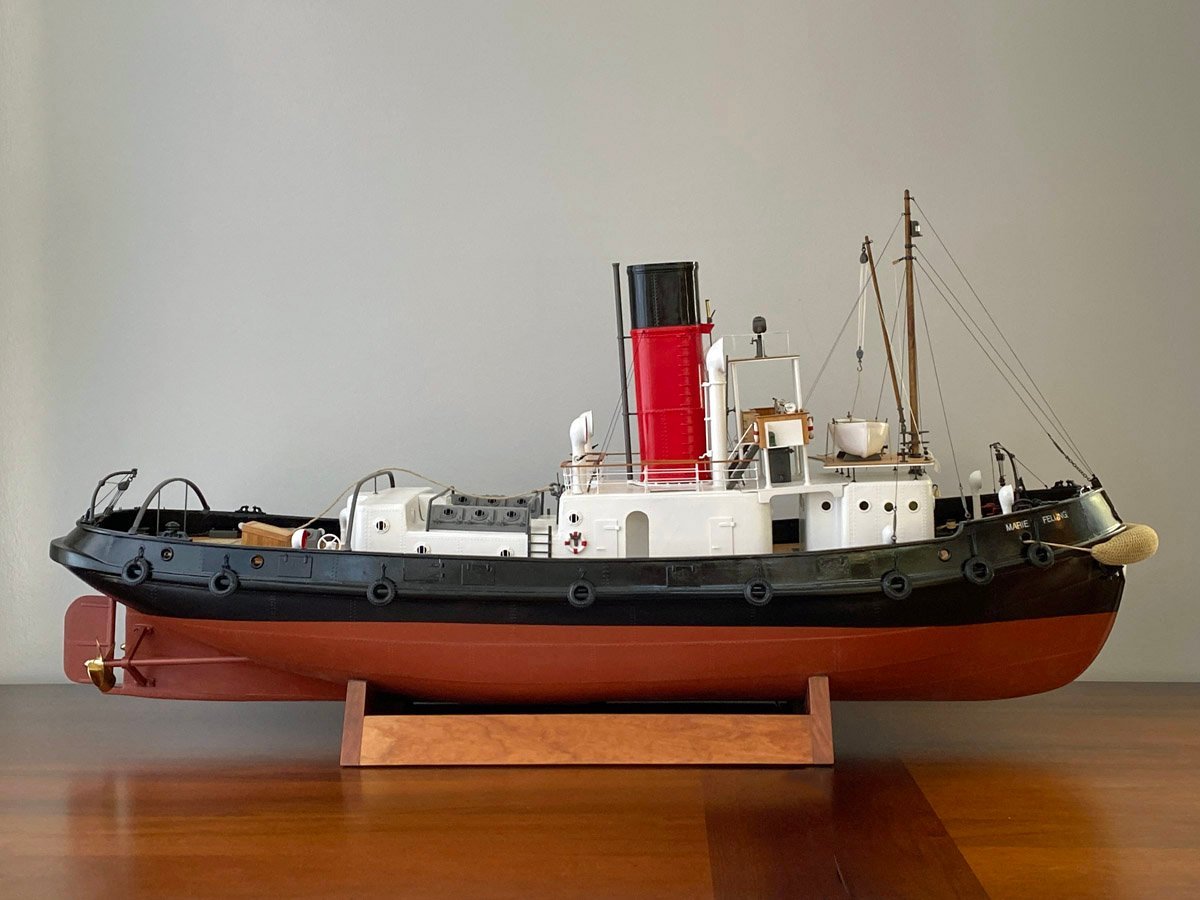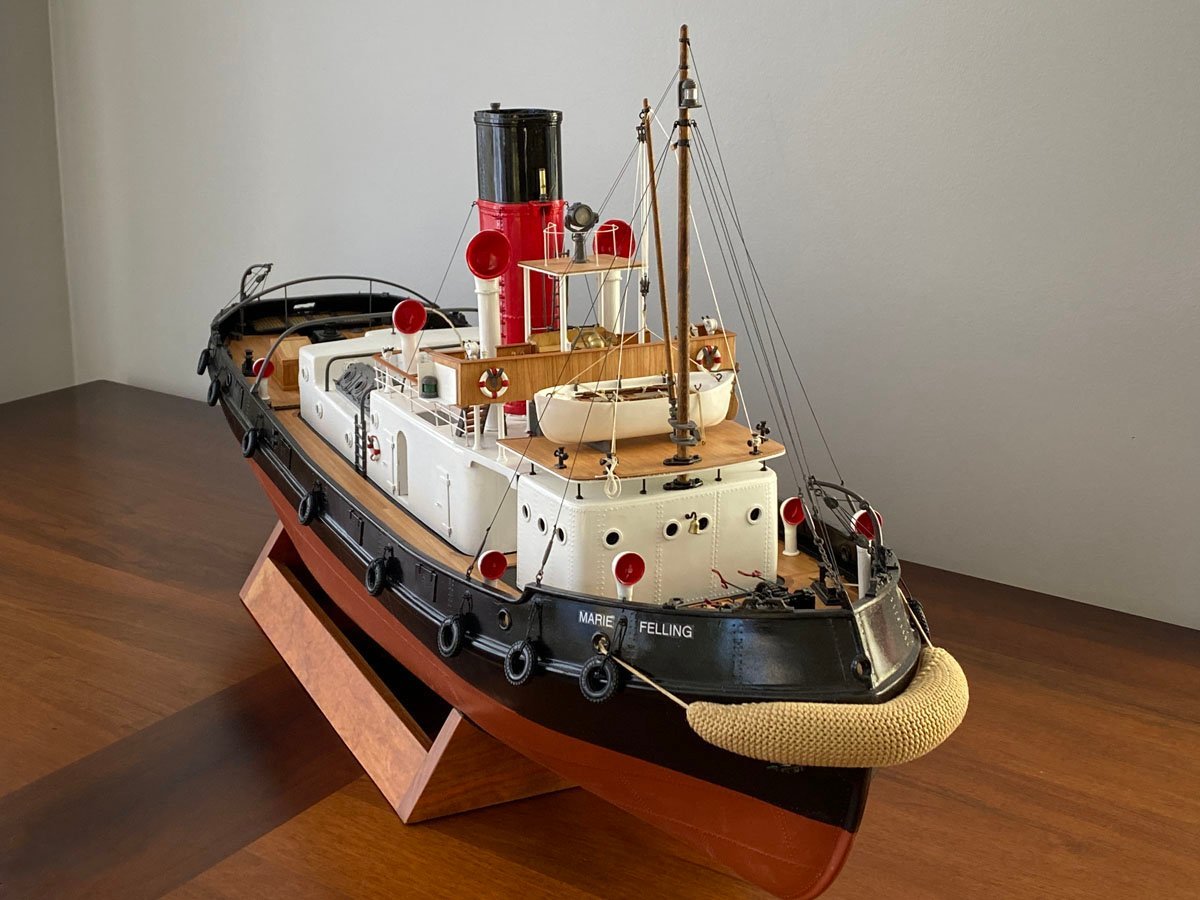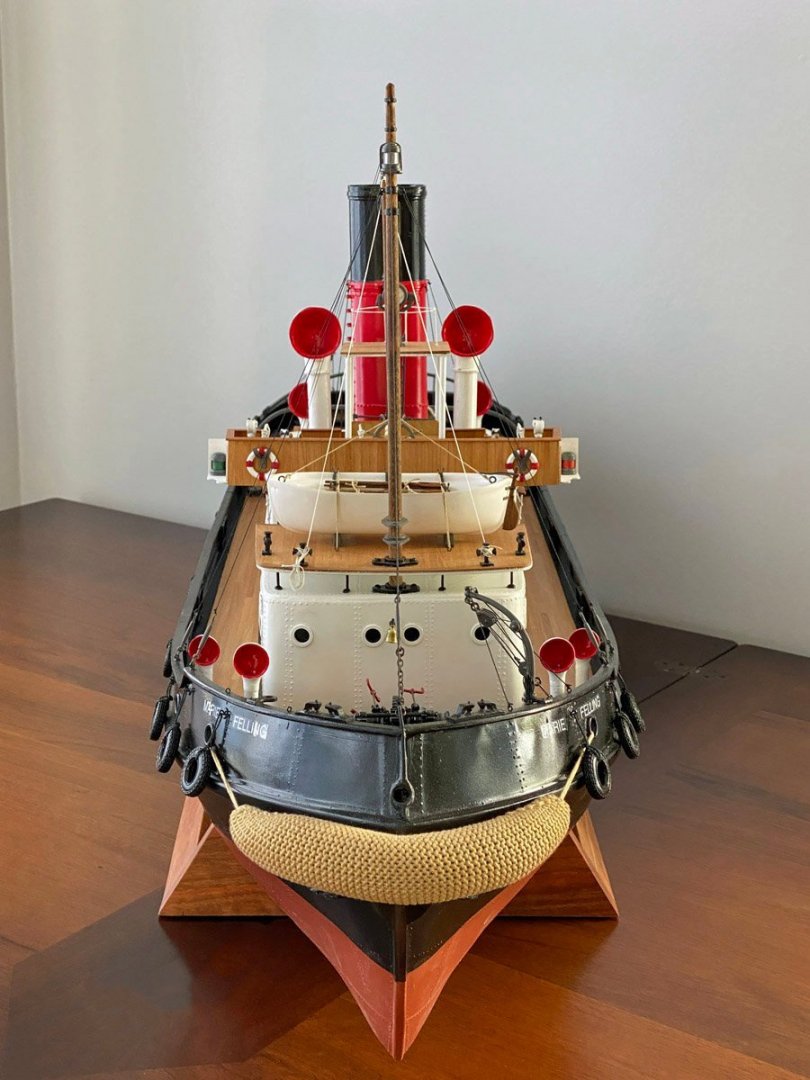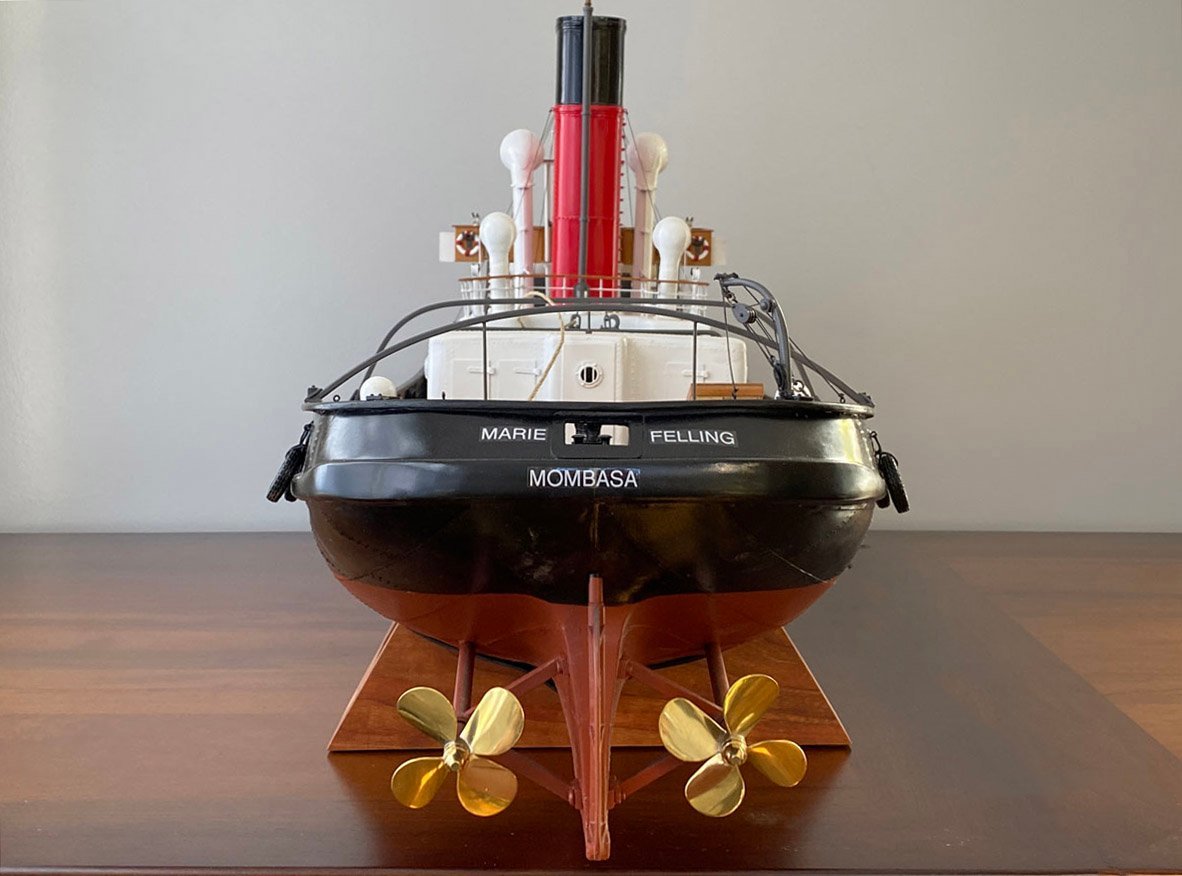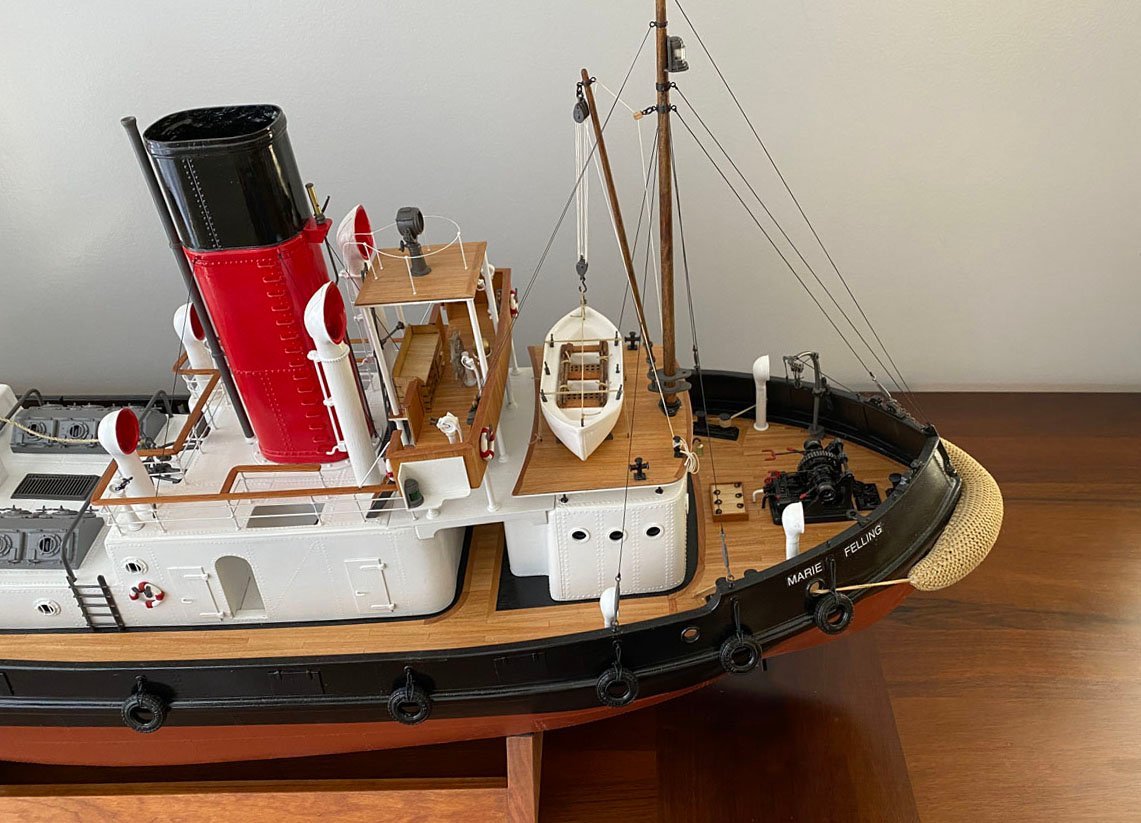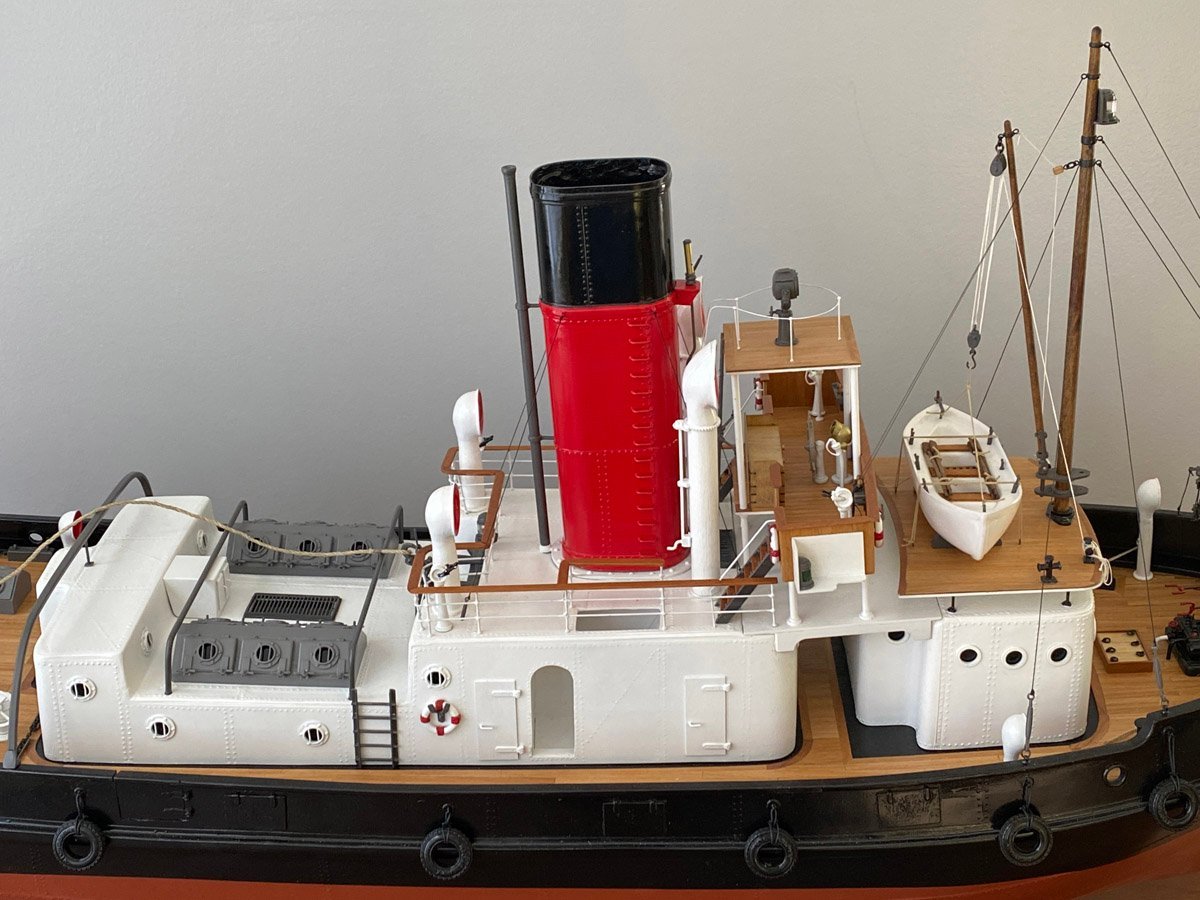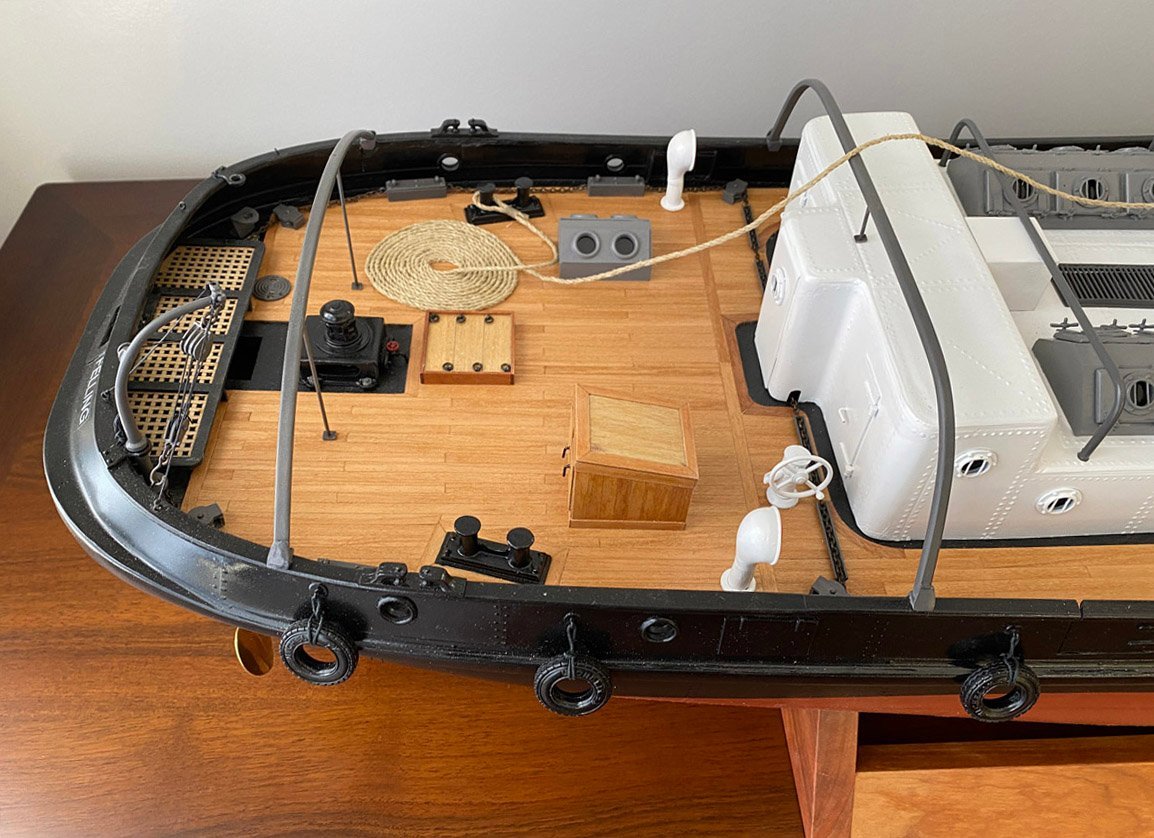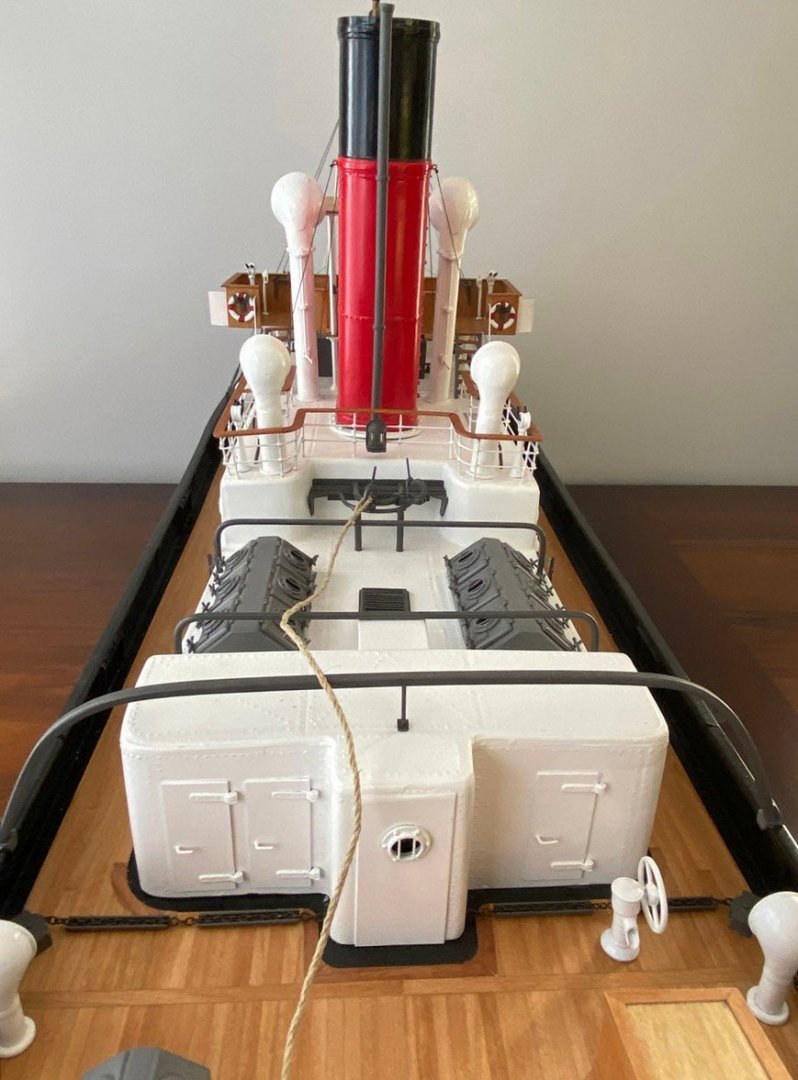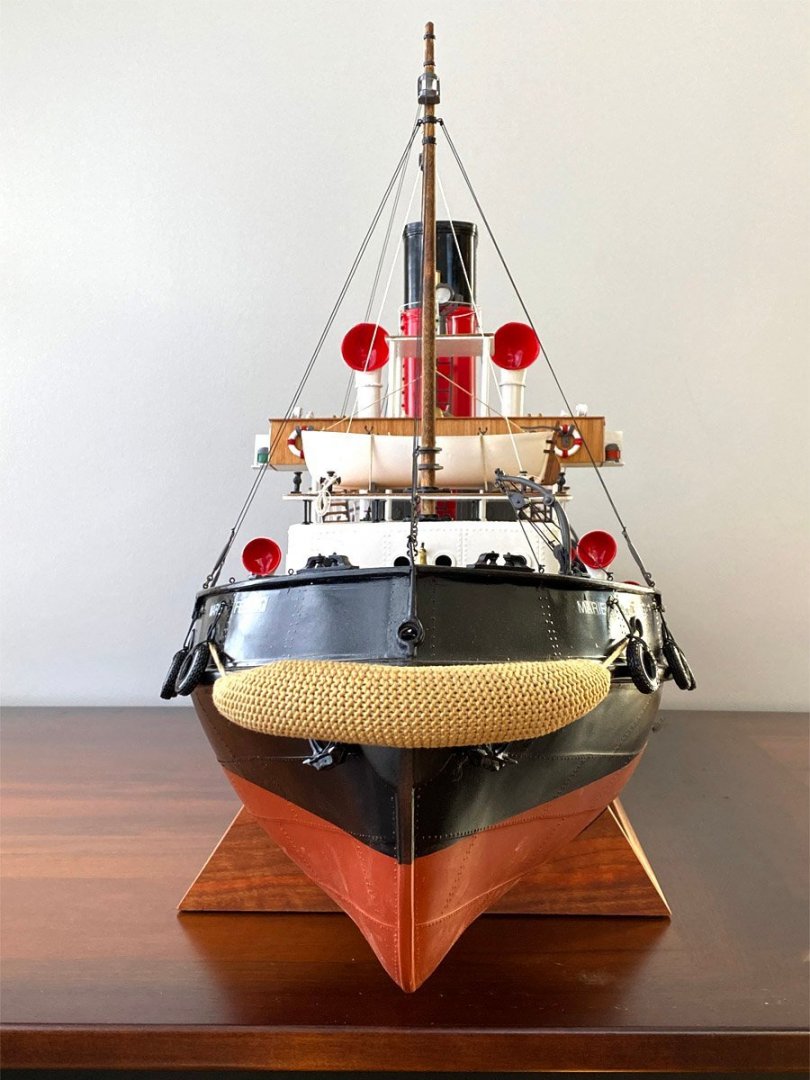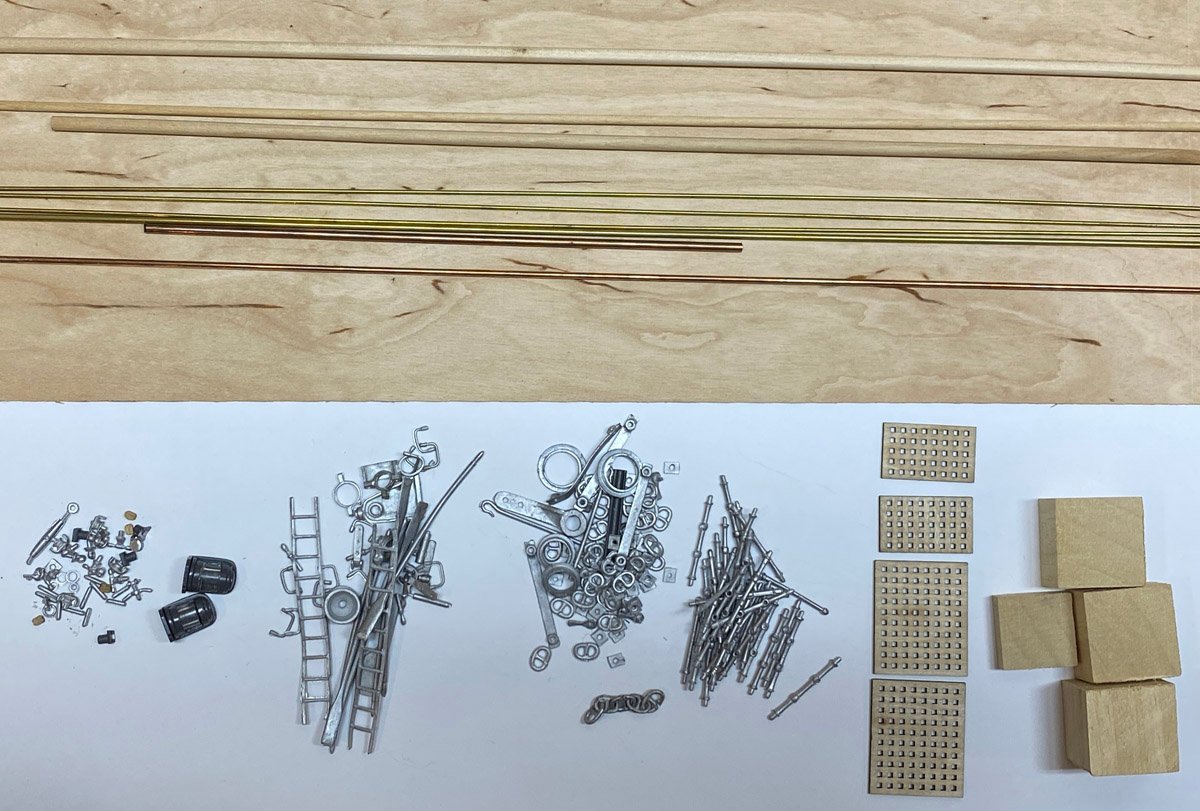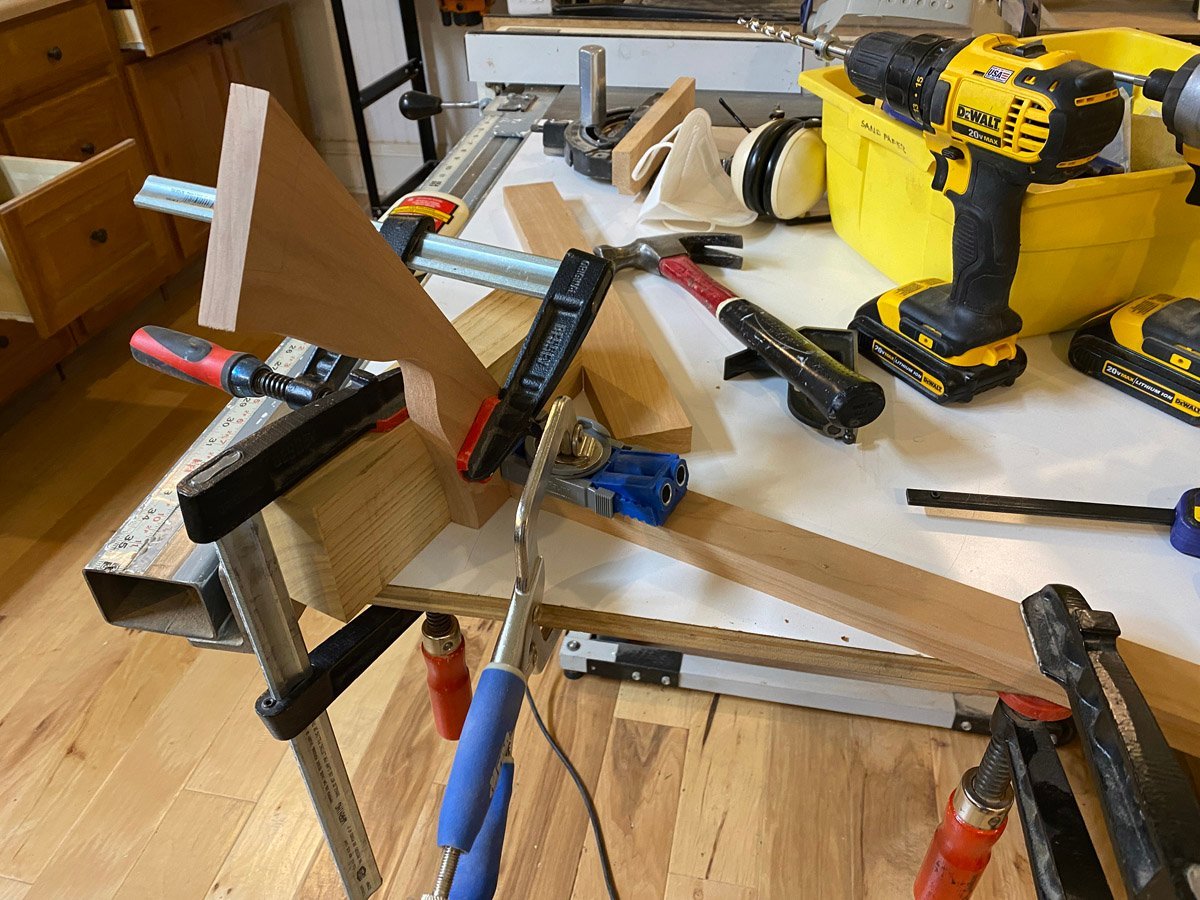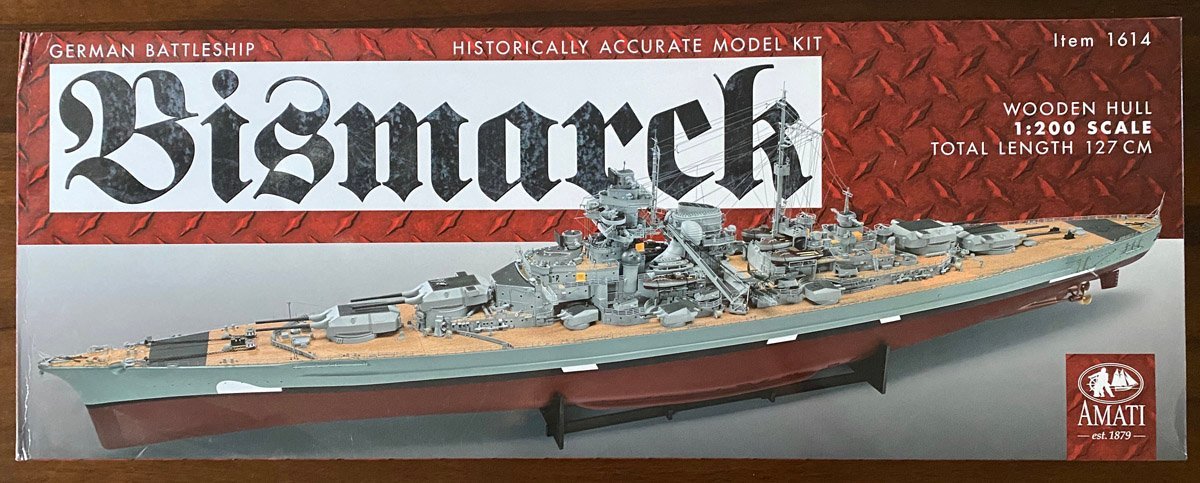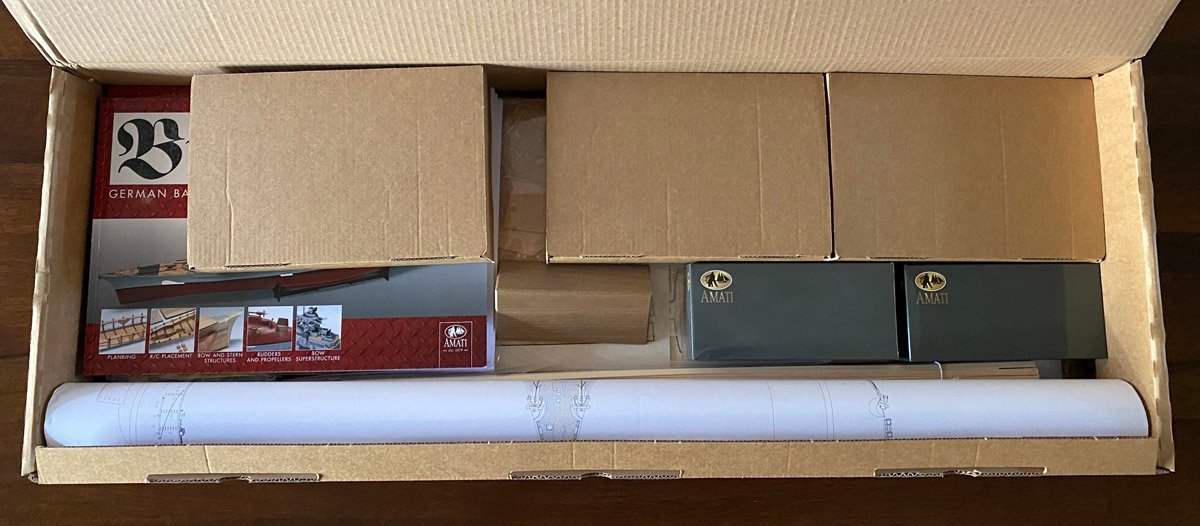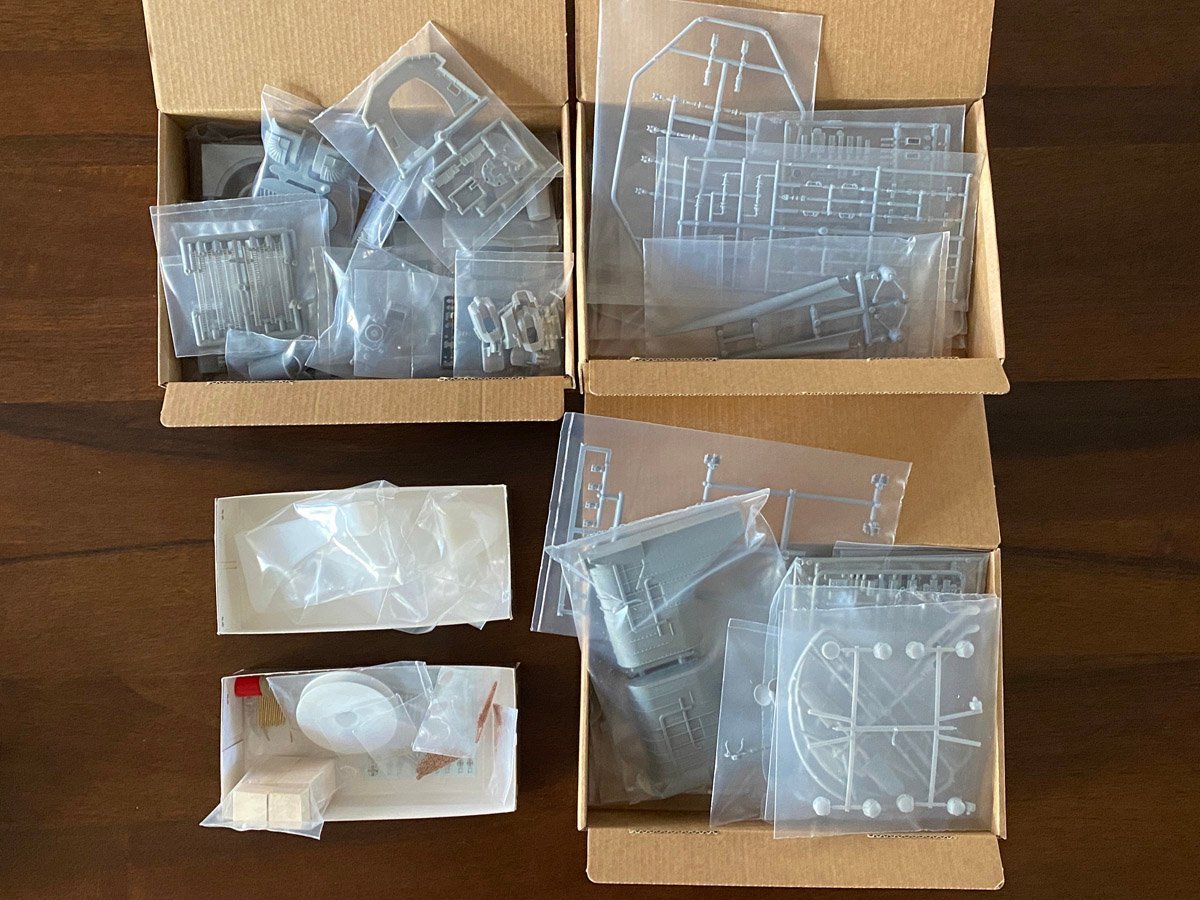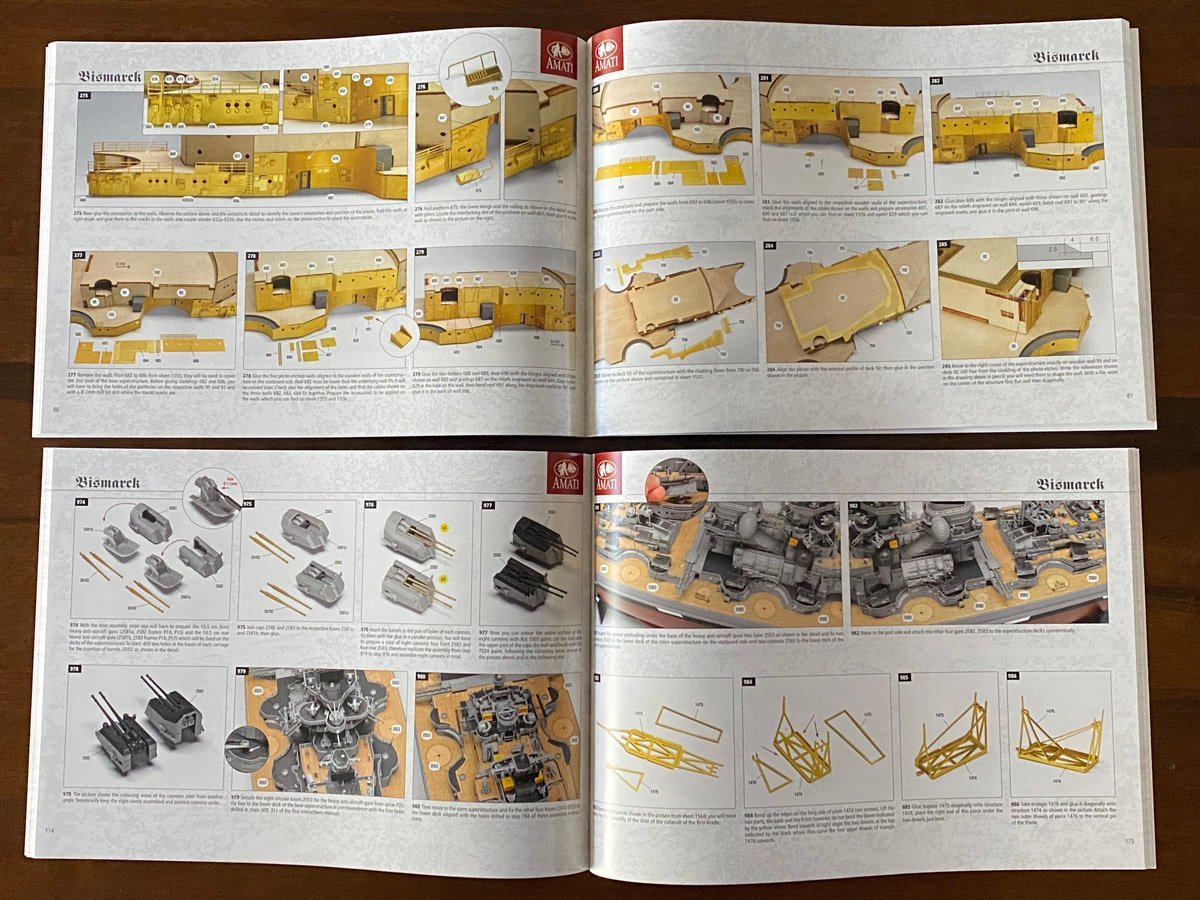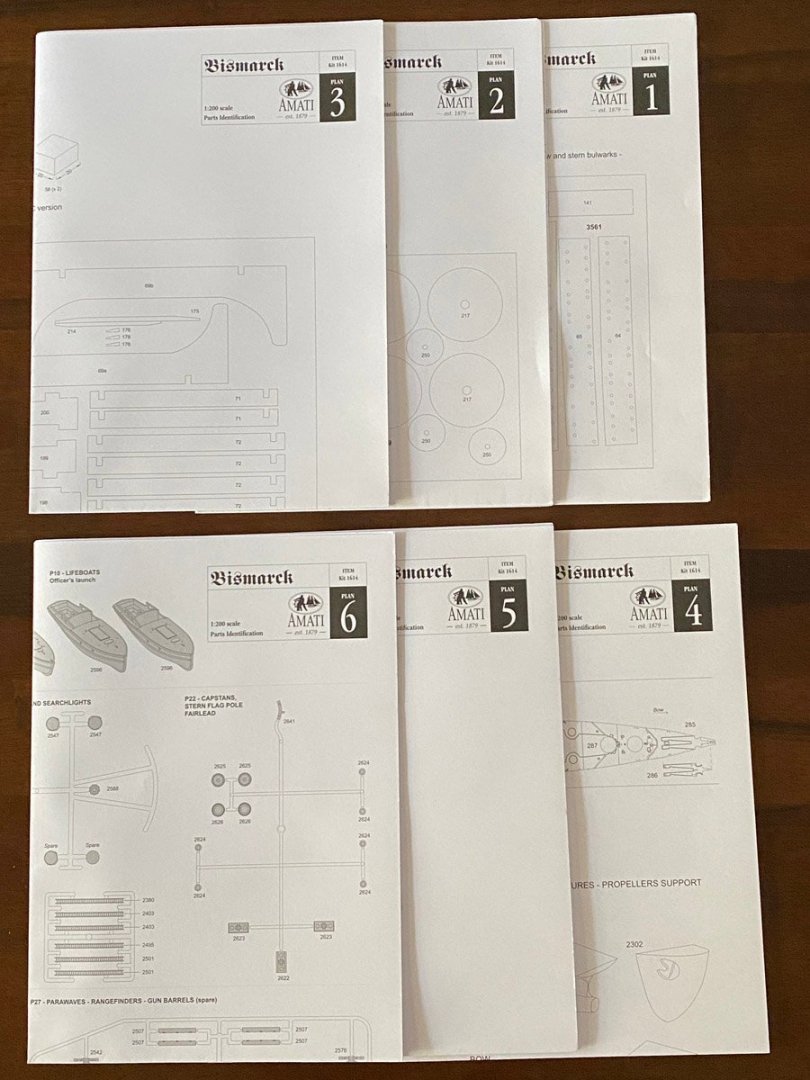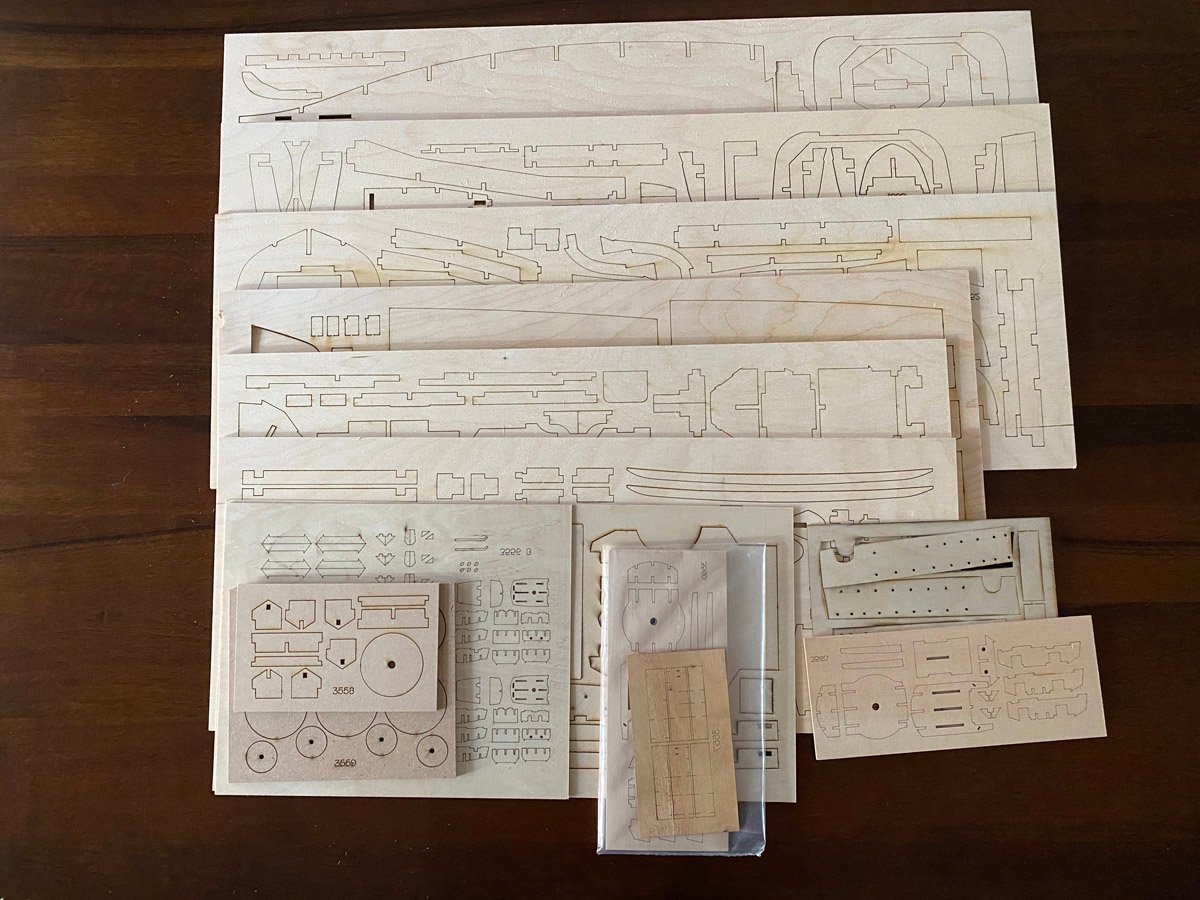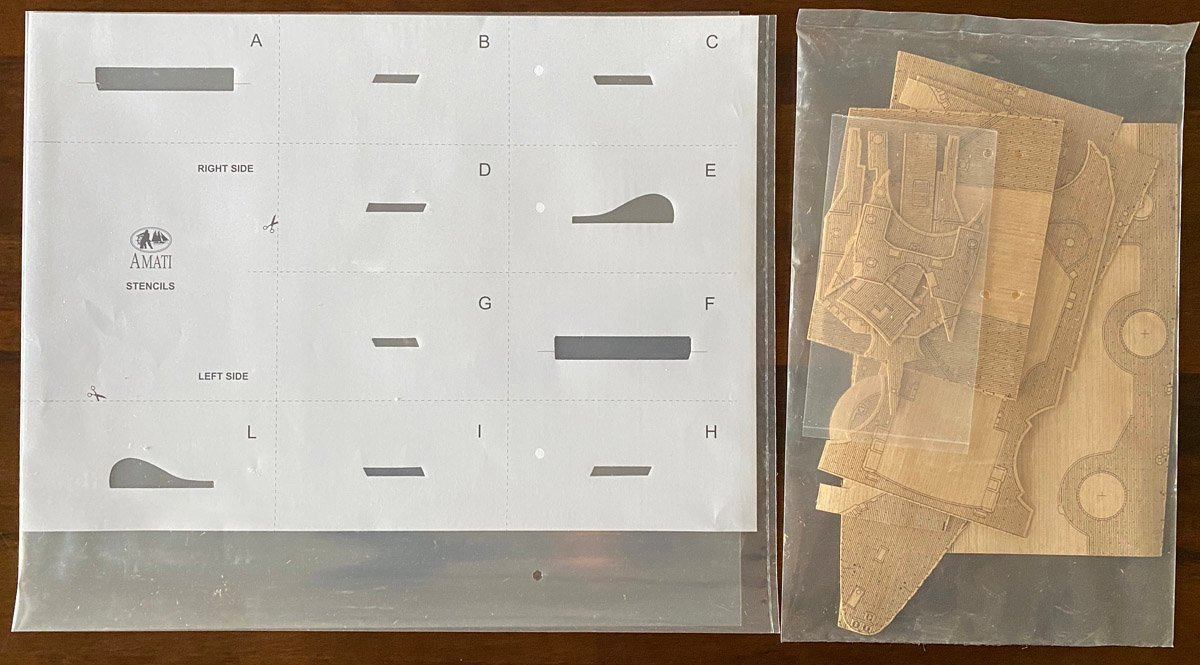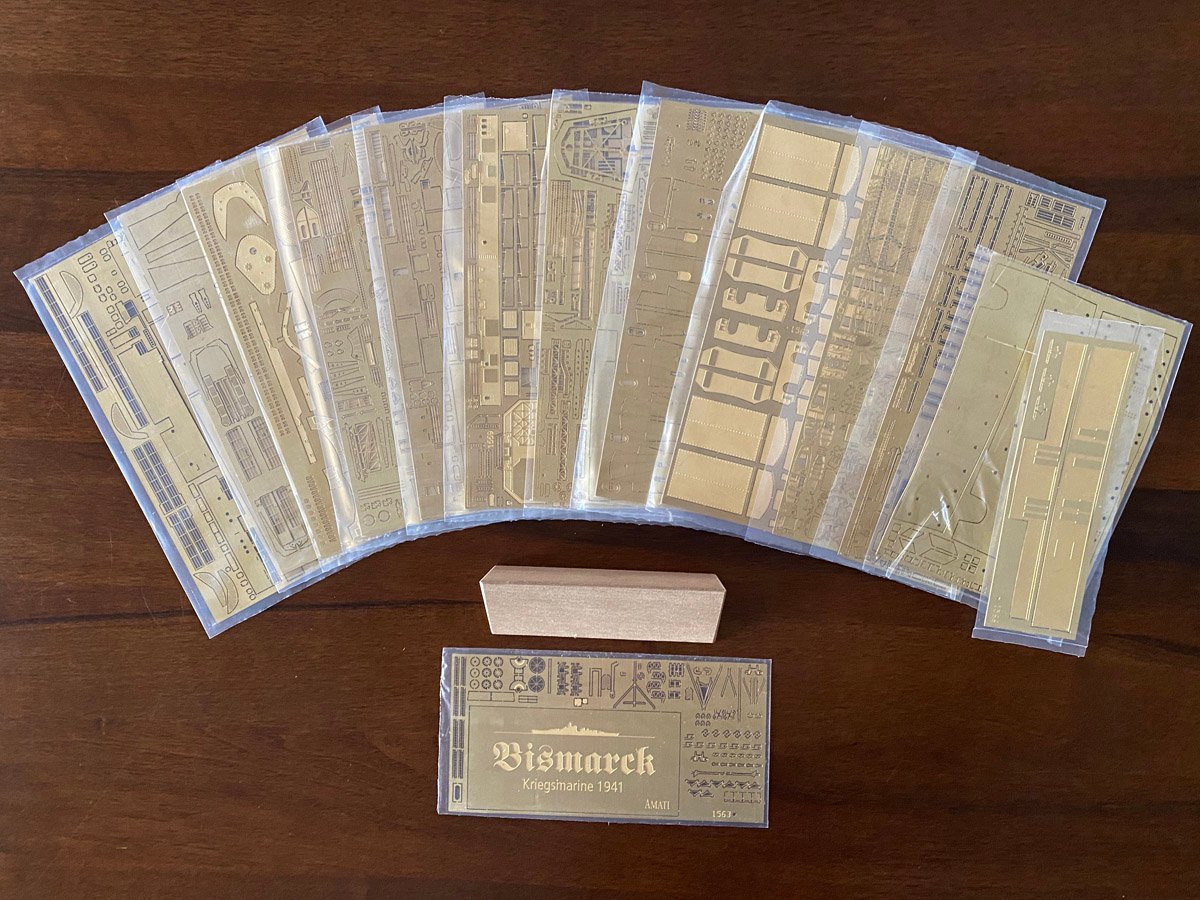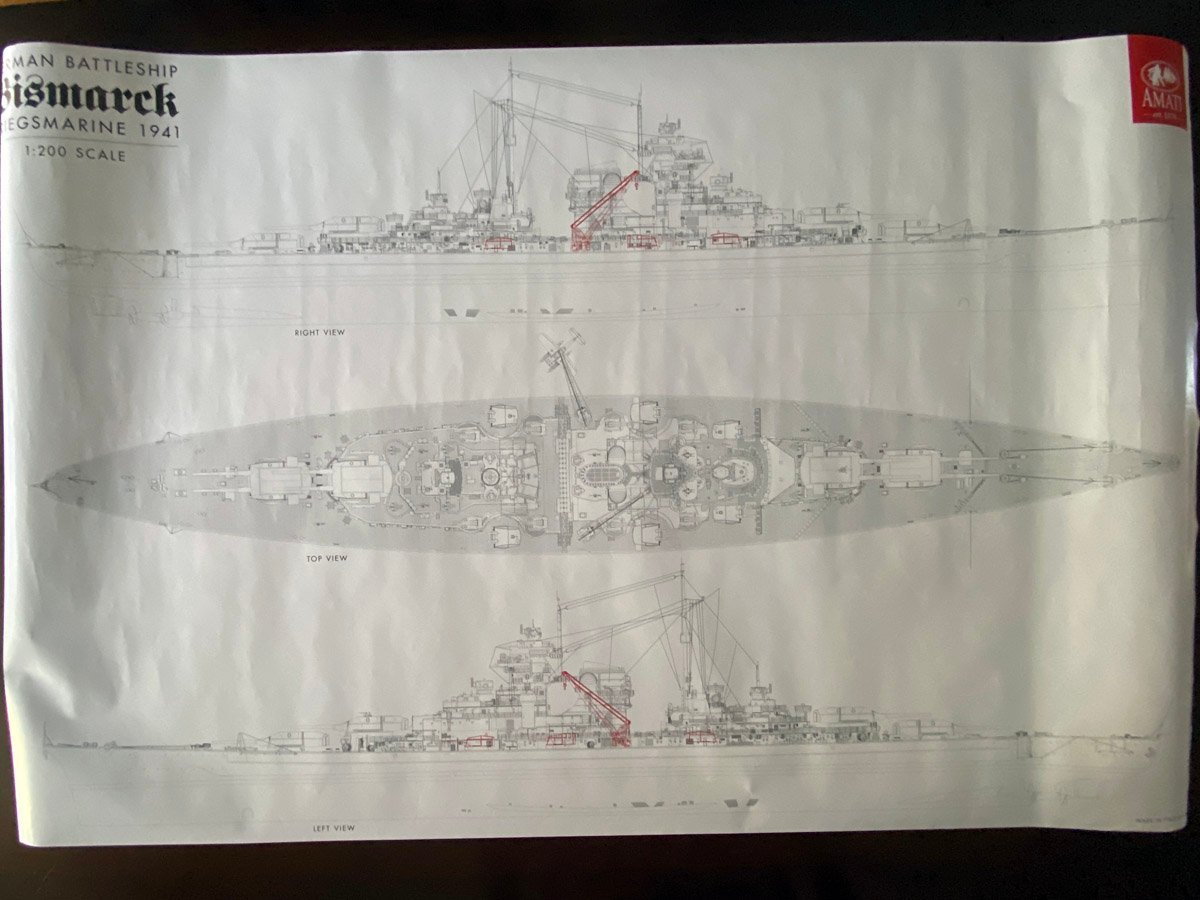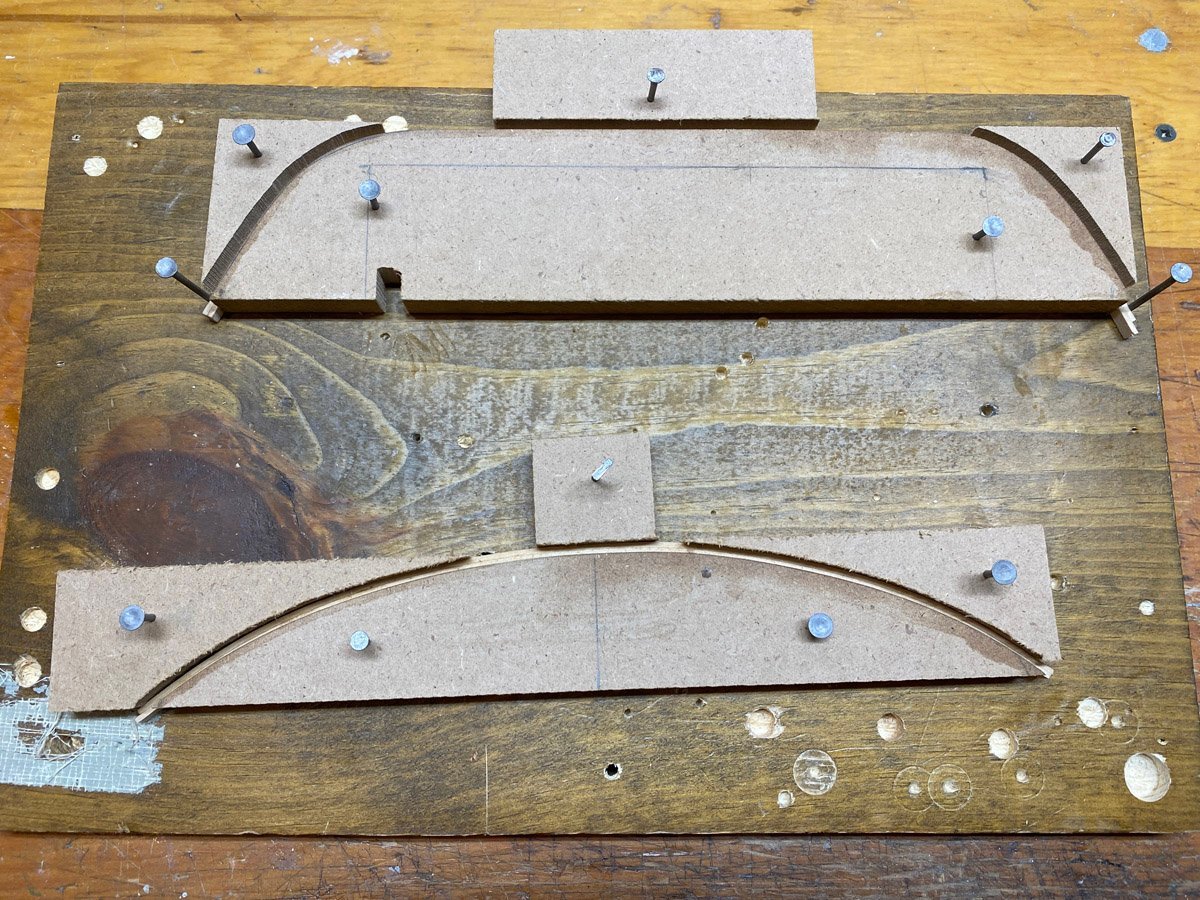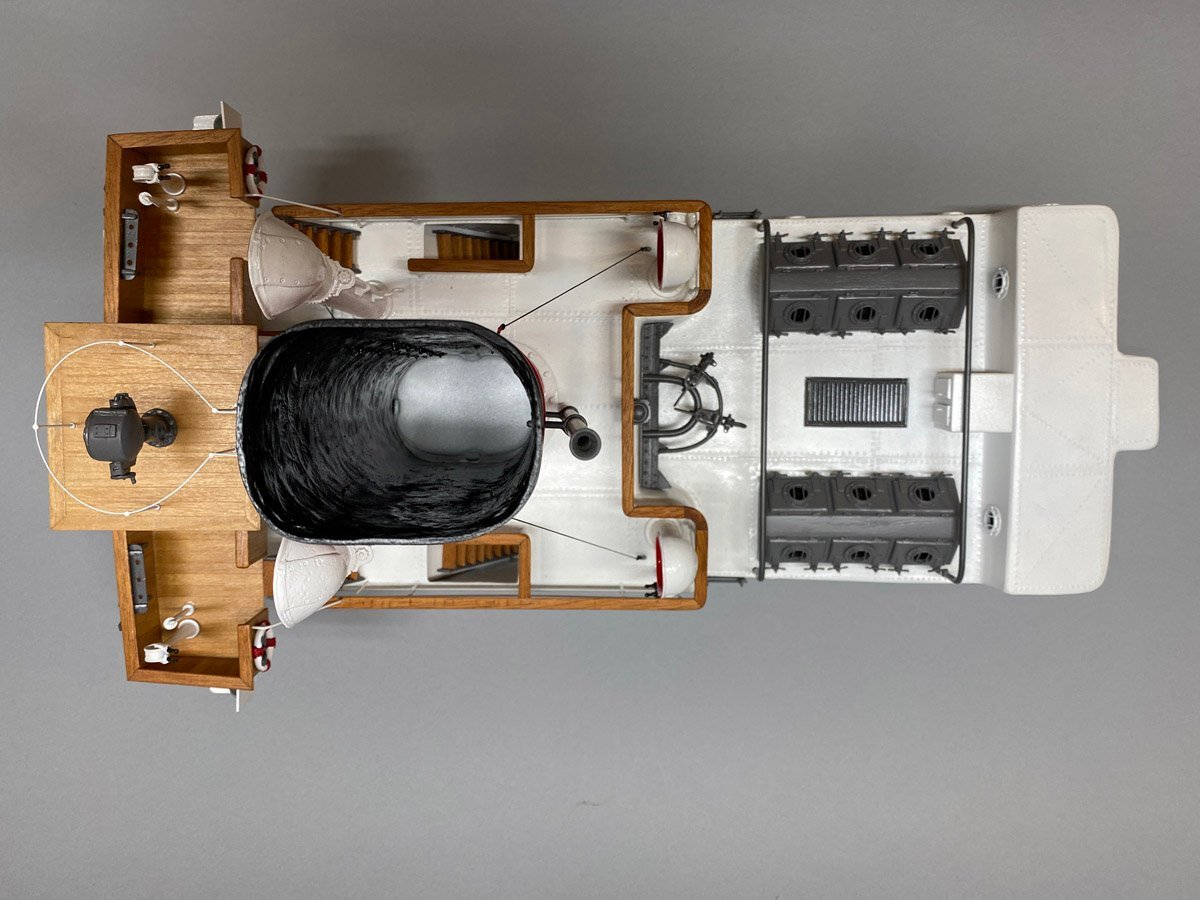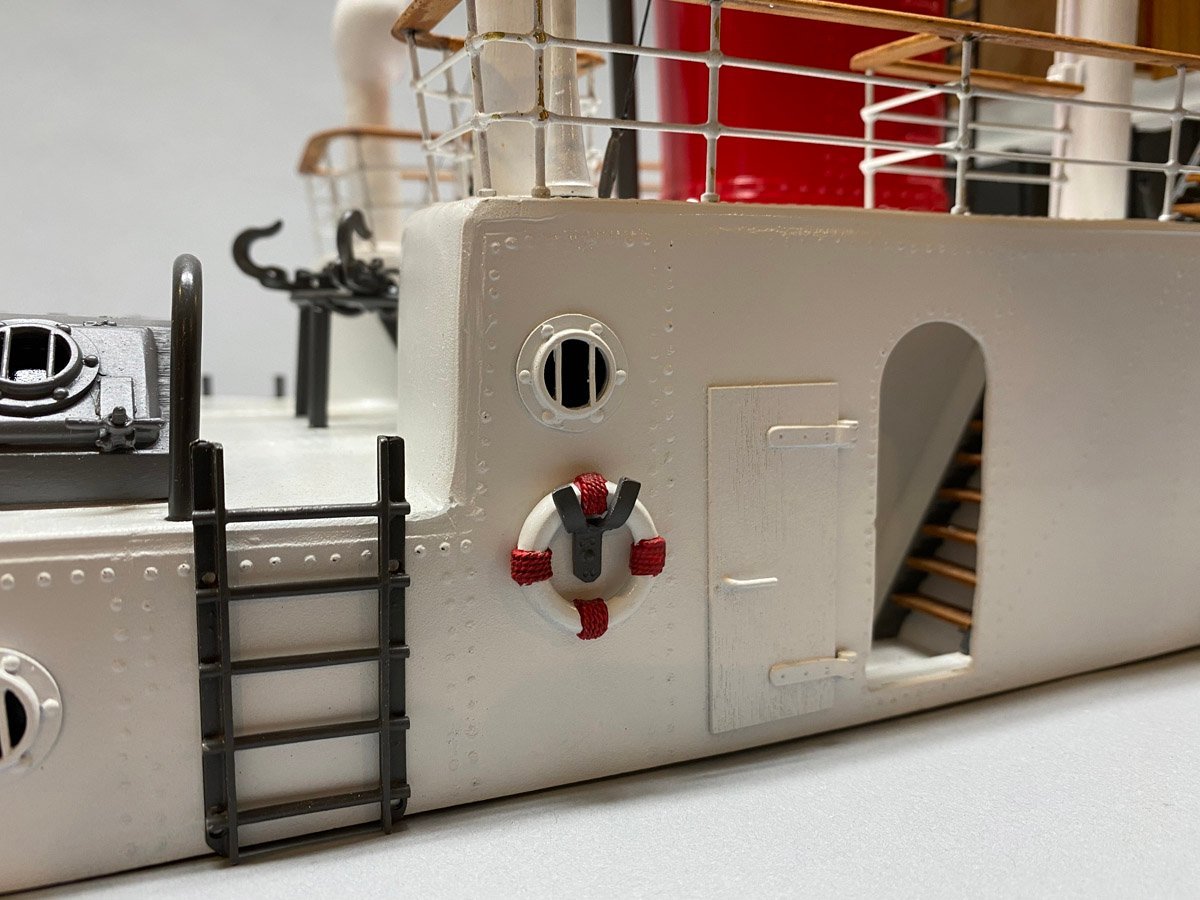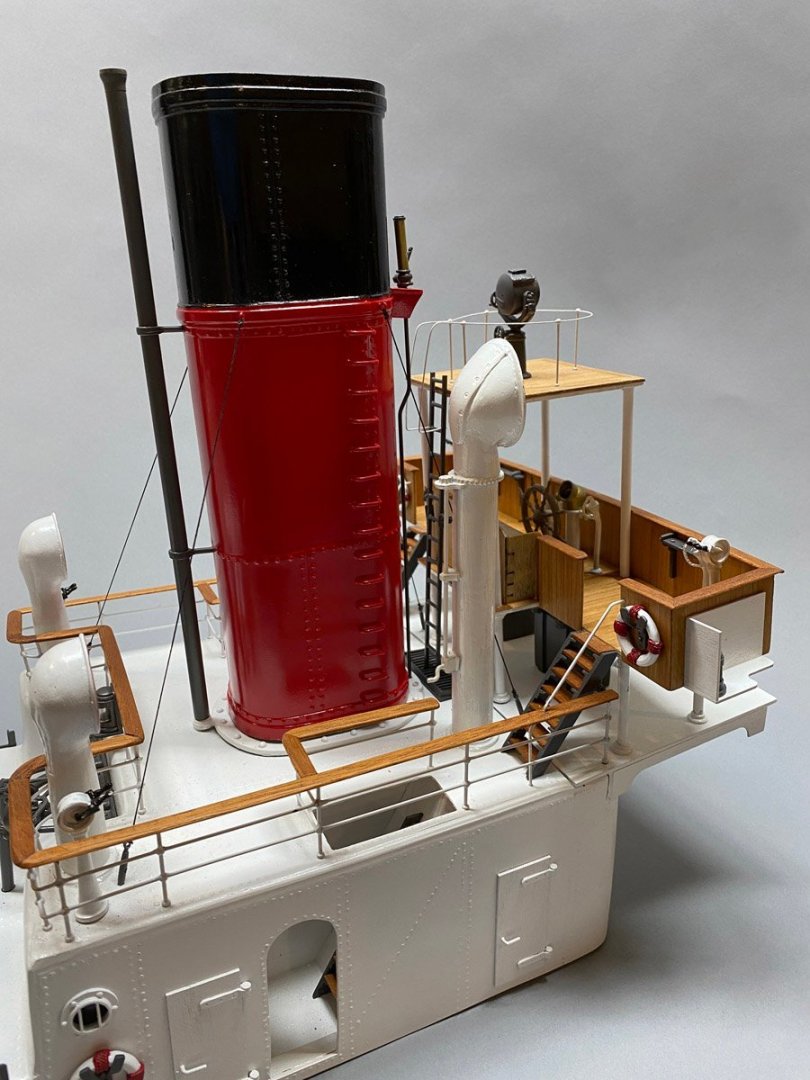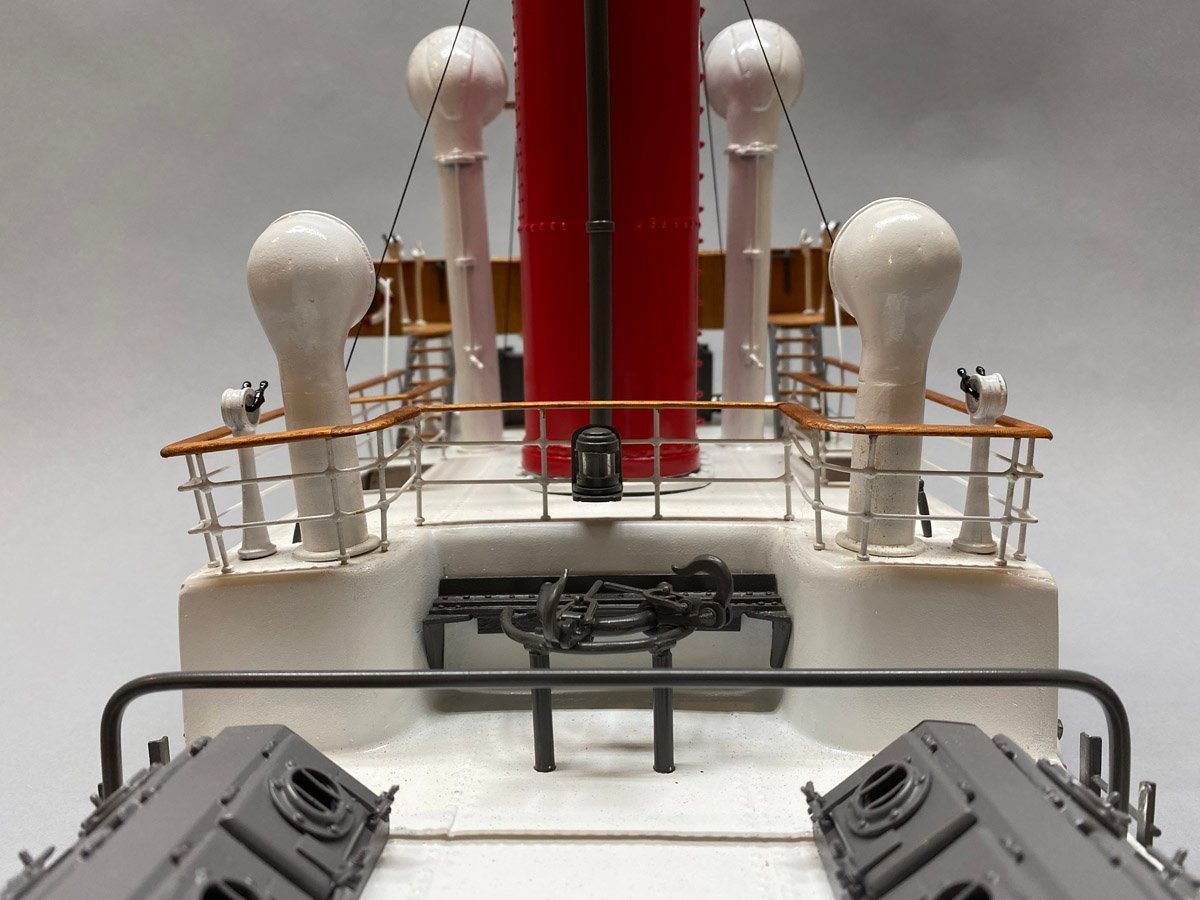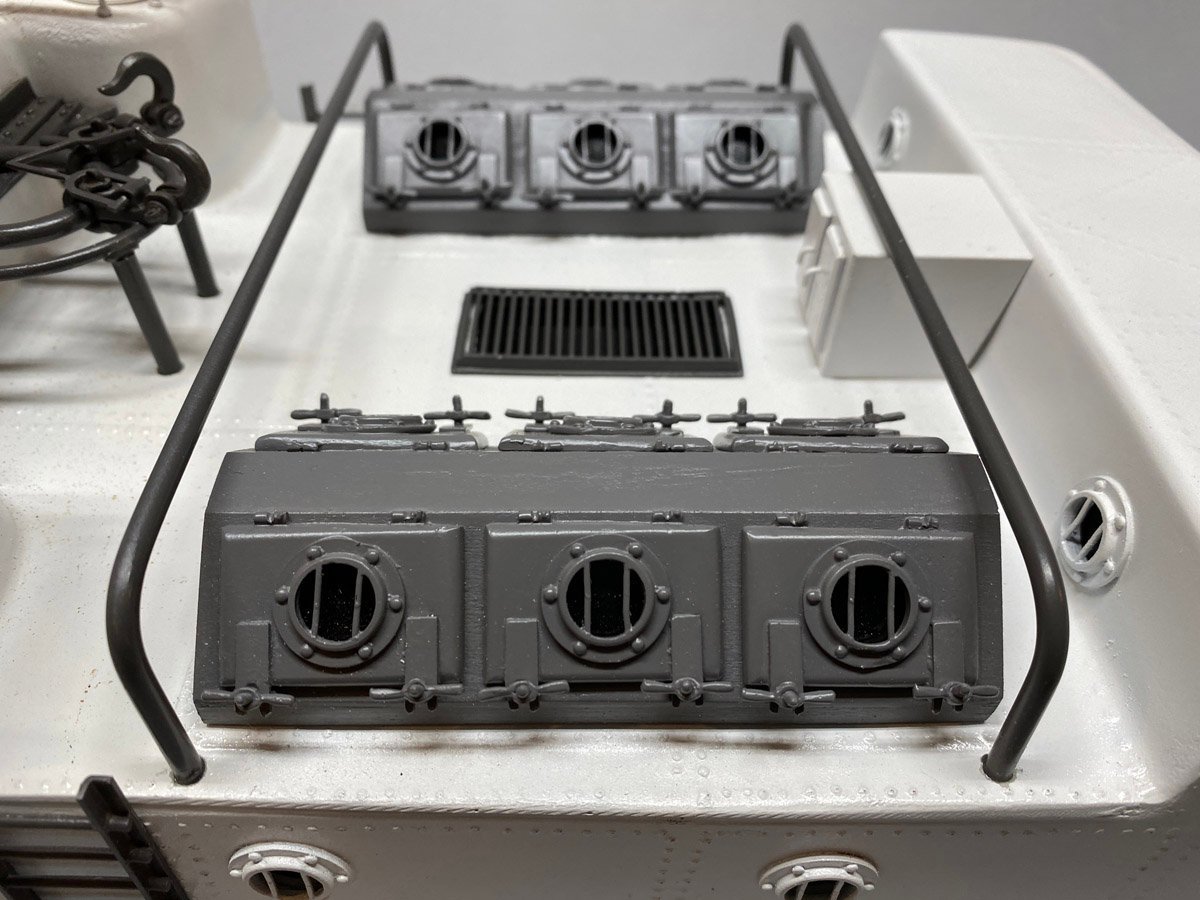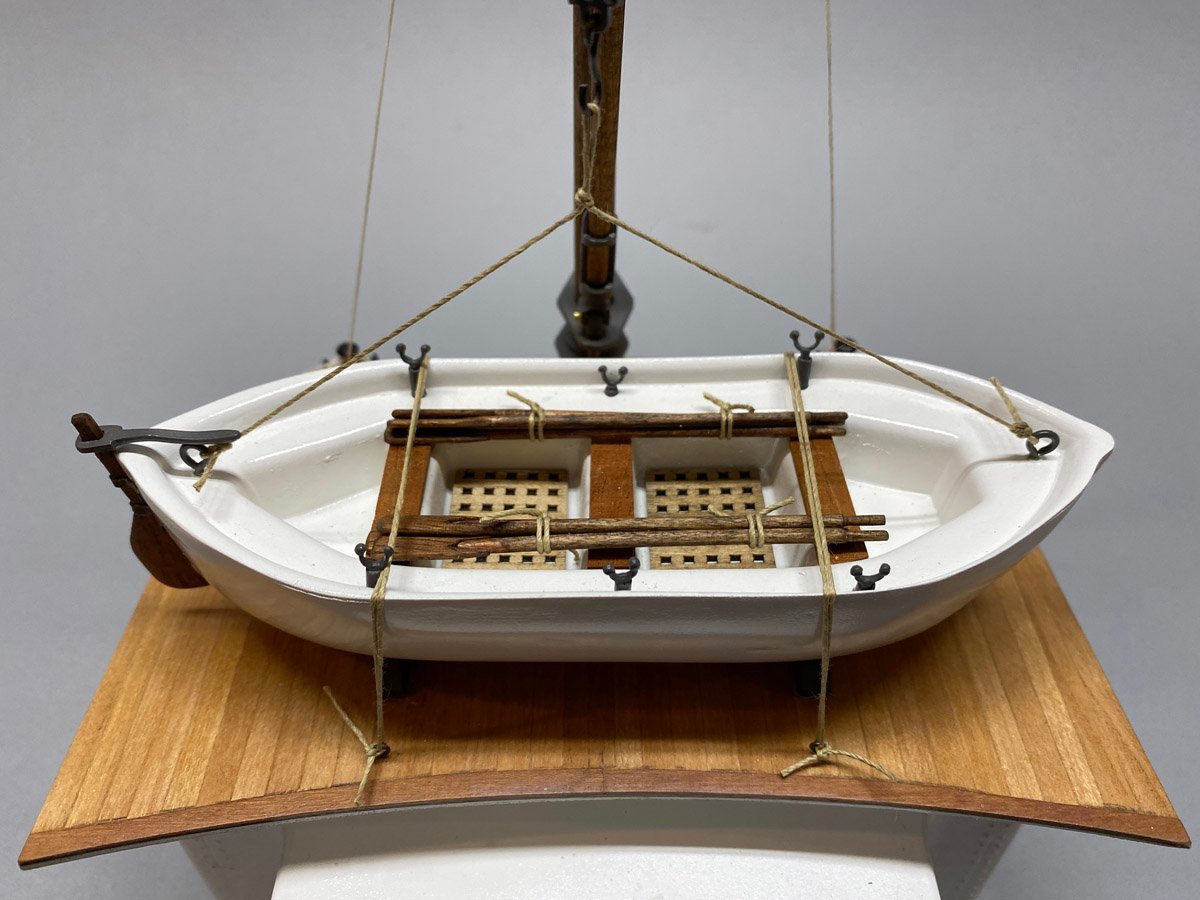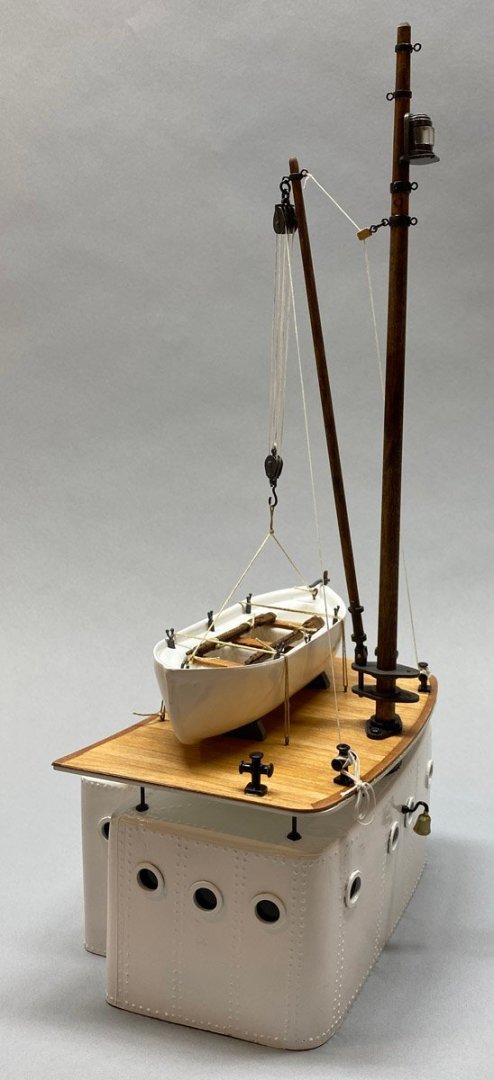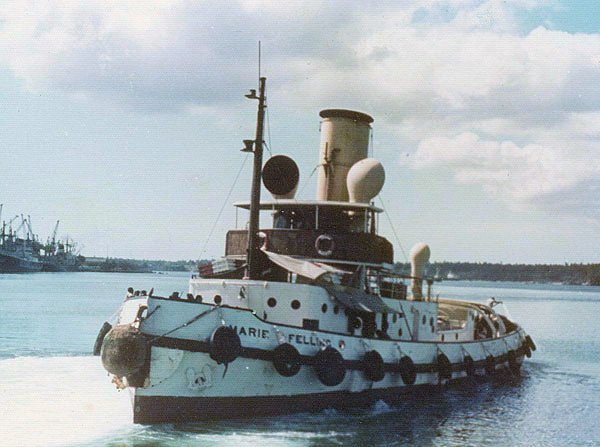-
Posts
697 -
Joined
-
Last visited
Content Type
Profiles
Forums
Gallery
Events
Everything posted by rvchima
-
Ted, I just completed my decks and anticipated the problems with unevenness. Instead of gluing deck to frame piece-by-piece, I glued the entire deck together on a flat board, then glued the complete deck to the frame later. The mid-deck is incredibly complicated with 12 pieces to glue up. The whole thing could have been laser cut in one piece of plywood and still fit in the box. I suppose that the complex construction results from the original kit being packaged with an A4 magazine. I used Famowood filler like you recommended. It fills very well and sands nicely. Thanks for the recommendation.
-
First Layer of Planking Complete, 32 hours I completed my first layer of planking. I did not follow the layout shown in the manual - I just worked down from the deck using PVA and up from the keel using CA until the planks met. I used the supplied brass nails to hold everything temporarily but removed the nails as soon as each plank was dry. The photos are before I did any filling or sanding.
-
Ted, Your model is coming along beautifully, and quite fast. Thanks for posting all the helpful hints. I was in St. Louis for a wedding and a long weekend. I just completed my first layer of planking and will post photos soon. Rod
-
Hull Framing The upper mid- and aft-decks are made to be removable for RC. There is plenty of room in the hull, but no mention of RC installation in the instructions. I am building for display only but will wait to glue the decks in place. It may simplify construction or painting later on if they are removable. Ted99 mentioned that the planks vary in thickness. I checked them all with a micrometer and found that they varied from 1.52 mm to 1.84 mm thick. I sorted them into 4 piles to use in different areas. I have 9 layers of planking in place now, but only one early photo. Here's my technique: Anchor the end of a plank with a nail. Drill 0.6 mm pilot holes through the plank into all bulkheads. Set a nail in each hole using needle nose pliers. Repeat for matching plank on other side. Lift a foot or so of plank, apply PVA glue to the edge with a brush, and push nails down part way with pliers. This minimizes the time that the glue is drying in my pot and on my brush. I can do a plank in about 45 minutes and remove the nails an hour later.
-
Sometimes I feel like I am assembling the skeleton of a prehistoric reptile. I guess, in a sense, I am.
-
I have not checked to see if every part in my kit is there. I hope that I'm not surprised later. I don't see any obvious damage to deck pieces. Do you mean the thick ply sub-deck, or the thin printed deck?
-
Ted, Beautiful job on the planking. I wasn't sure what filler to use but I'll try Famowood. I've used Behlen water-based grain filler in the past but it won't fill anything too deep. BTW, are you building for RC or just display? I am just building for display and am not sure whether to make the main deck removable as per the instructions or to glue it down. It may be easier to work on later if it remains removable.
-
This will be one big model So far the build is like those laser-cut mechanical models that you see everywhere. Pop out the parts and glue them together. I haven't actually cut a piece of wood yet. Planking the hull will be different. I keep looking for round formers for the bottom of the hull, but the Bismarck is basically a flat-bottomed girl (they make the rockin' world go round - Queen.)
-
HOF, Thank you for the links to the partworks builds -they should be helpful. At first glance I see two differences between the partworks model and the Amati model: 1. The partworks model has to fit in a magazine package, so the biggest parts are ~12 inches long. The keel pieces on the Amati model are almost 20 inches long. Stronger, fewer joints, but similar construction. 2. The complete partworks model lists at £799, or about $1090. I paid $699. for the Amati kit, and now see it listed as low as $563. (Sigh.) It must be expensive to put out 140 magazines and parts sets.
-
And So It Begins I was out of town last week and finally got to start gluing wood. The laser cutting is excellent with just 2-3 hair-thin tabs holding each piece in place. Most of the notches are just a bit too wide so pieces are a loose fit. It's always better to have a tight fit and remove material as necessary. The hull construction is quite unconventional. You probably couldn't figure it out from the plans alone but the step-by-step instructions make it all clear.
-
I'm finally getting started on mine. Thanks for all the tips on planking. They will come in handy soon.
-
A former and much older colleague of mine retired to "the old folks home." I visited him a few years later. He was 85, president of the ski club, and had a large RC aircraft in progress on the dining room table. I told him I want to be like him when I grow up.
-
The model is coming along beautifully! I am looking forward to seeing some of those cast cannons poking out of the gun ports. What a shame about the wet wood though. I am glad to hear that CAF models will replace it. I am totally on board with using power tools as needed. Proxxon's oscillating sander is great for small details as long as you make up your own self-adhesive sandpaper. Rod
-
Many thanks to the folks who looked in. I hope that this build will help someone interested in Caldercraft models in the future.
- 50 replies
-
- Marie Felling
- tug
-
(and 3 more)
Tagged with:
-
Marie Felling - Complete, 285 hours, 88 days Final pictures of the Marie Felling. It was fairly easy with the GRP hull and cabins, and somewhat monotonous with all the white metal pieces. It does make up into a beautiful model though and would be great for RC if you're into that.
- 50 replies
-
- Marie Felling
- tug
-
(and 3 more)
Tagged with:
-
Building a Stand I built a new stand out of cherry and joined the corners with a Kreg jig. It was a little complicated clamping the ends to the rails, but it worked out OK. Parts I didn't Use Here are the parts that I didn't use. It seems like Caldercraft updates parts and leaves the old ones in the box. A nice sheet of plywood for the deck (laser cut deck included) Gratings for the aft deck (laser cut aft deck included) Lots of dowels and brass rod (I bought new brass for the railings) Several wood blocks Stanchions (I bought brass stanchions) Ladders (I built my own) Links for anchor chain (I bought a nice brass chain) Lots of other random white metal parts.
- 50 replies
-
- Marie Felling
- tug
-
(and 3 more)
Tagged with:
-
Ted, I posted some "What's in the Box" photos yesterday. I won't be able to start for 8-10 days, so you can get a good lead. Search for "airbrush holder sticks" on eBay or Amazon. Mine came disassembled and took an evening to put together. The EZ line worked very well but I am concerned that it could turn brittle with age. Get yourself a "Glue Looper" for applying CA to small parts. It's just a tiny PE loop that fits into an X-Acto handle and picks up a tiny drop of CA by capillary action. Also get yourself a PE bender - a 3" square aluminum "clamp" that holds the part down while you bend it around a square edge. Both available on Amazon or eBay. They sell "sticky sticks" for handling small parts. (That's not the right name, but it's all I can think of.) I think they're made for dentists, but model train builders use them. They look like those disposable micro paintbrushes but have a sticky glob on one end. I found that they had too much grab and frequently pulled parts back off after I thought the CA was dry, so I tossed mine. Instead, I have a roll of 3M double sided tape. I cut off a tiny piece and tape it over the end of a 1/8" balsa stick, then use that to pick up PE parts. I use it a few times then replace the tape. I have the book "Anatomy of the Ship, The Battleship Bismarck" by Stefan Draminski. It looks like a perfect reference for this model. I really can't see panel lines in any of the photos, but the drawings show them on the hull below the waterline and around the portholes fore and aft. Most of the upper hull has a few long, horizontal lines. I believe that's the armour belting. I will look into this later, but I don't usually get into such fine detail. Have fun with your build. I am looking forward to exchanging notes with you, and I suspect we'll see some more build logs pop up soon. Rod
-
What's in the Box The box has a beautiful, full-color photo on the front. The box is packed like a new iPhone. Three boxes of beautiful plastic parts, a small box of resin parts, and a small box of eyes, rigging, and miscellaneous brass parts. Two full-color instruction manuals with details of every little part. More details than a LEGO kit. A full-sized 3-view of the model, suitable for framing. Six sheets of parts layout diagrams. Three huge bundles of sanded basswood planks. The Bismark has a plank on frame hull. The Prinz Eugen had a plastic hull that saved a lot of time, but hey, I like working with wood. Lots of plywood sheets of laser cut parts. Stencils for the bow-wave camoflage. Planked decking printed to scale! I planked the hull of my Prinz Eugen with 4 mm wide basswood. It looks good but it's 5x too wide for this scale. Fourteen sheet of photo etched brass, including an awesome nameplate for the display stand. That's what's in the box. I can hardly wait to get started, but I have some other commitments for the next week or so. Stay tuned.
-
Back in 2020 I saw this post on MSW: 1:200 Bismarck - coming soon! The Bismarck kit was announced by Amati. I have built Amati kits before and know that they are top quality. I was working on an Aeronaut model of the Prinz Eugen heavy cruiser at the time - not a great kit but it turned out OK. I started checking the Amati site every few days, and over a year later I finally found it offered for sale on agesofsail.com. I ordered it immediately and am about ready to start.
-
Ted, I will be starting this kit soon and will be following your build log with great interest. Rod
-
- 50 replies
-
- Marie Felling
- tug
-
(and 3 more)
Tagged with:
-
A Bunch of Photos Before Final Assembly - Aft Cabin I didn't use the color scheme from the original Marie Felling either. Looks like I have some touch up to do on that rail! Watch out for that last step! Other build logs have noticed that the stairs in the main cabin don't reach the upper deck - the castings are about two steps short. I didn't notice until I had built the first set, and I wasn't about to build them again. The towing hooks and release levers would actually work if they were made of something stronger. The kit does not show these beams over the skylights but another photo of the actual ship does. I bent them from some thick copper rod.
- 50 replies
-
- Marie Felling
- tug
-
(and 3 more)
Tagged with:
-
A Bunch of Photos Before Final Assembly - Forward Cabin, Mast, and Lifeboat The instructions call for a tall mast with three lights, a yard arm for signal flags, a derrick, a lifeboat, and a searchlight on top of the bridge. There are a few old photos of the Marie Felling around. This one shows a low mast, one light (maybe?), no yard arm, no derrick, life rafts, and no searchlight. It turns out that the owner of Caldercraft wasn't too keen on scale details as long as the model looked somewhat like the real thing. I mostly went by the instructions but made some changes for practical reasons. The instructions call for the mast to extend 370 mm above the boat deck, making the model 650 mm (25.5") high. I cut the mast down about 100 mm and removed the junk on top. The model now stands 550 mm (21.5") high. I kept the derrick. It is rigged with a 5:1 pulley system for the boat but a 1:1 pulley for the boom. I wonder if you could really handle that boom with a simple pulley? The lifeboat comes as two vacuum formed halves, with nice gratings but white metal oars, oar locks, and rudder. I added wooden seats and built a wooden rudder and oars.
- 50 replies
-
- Marie Felling
- tug
-
(and 3 more)
Tagged with:
About us
Modelshipworld - Advancing Ship Modeling through Research
SSL Secured
Your security is important for us so this Website is SSL-Secured
NRG Mailing Address
Nautical Research Guild
237 South Lincoln Street
Westmont IL, 60559-1917
Model Ship World ® and the MSW logo are Registered Trademarks, and belong to the Nautical Research Guild (United States Patent and Trademark Office: No. 6,929,264 & No. 6,929,274, registered Dec. 20, 2022)
Helpful Links
About the NRG
If you enjoy building ship models that are historically accurate as well as beautiful, then The Nautical Research Guild (NRG) is just right for you.
The Guild is a non-profit educational organization whose mission is to “Advance Ship Modeling Through Research”. We provide support to our members in their efforts to raise the quality of their model ships.
The Nautical Research Guild has published our world-renowned quarterly magazine, The Nautical Research Journal, since 1955. The pages of the Journal are full of articles by accomplished ship modelers who show you how they create those exquisite details on their models, and by maritime historians who show you the correct details to build. The Journal is available in both print and digital editions. Go to the NRG web site (www.thenrg.org) to download a complimentary digital copy of the Journal. The NRG also publishes plan sets, books and compilations of back issues of the Journal and the former Ships in Scale and Model Ship Builder magazines.






